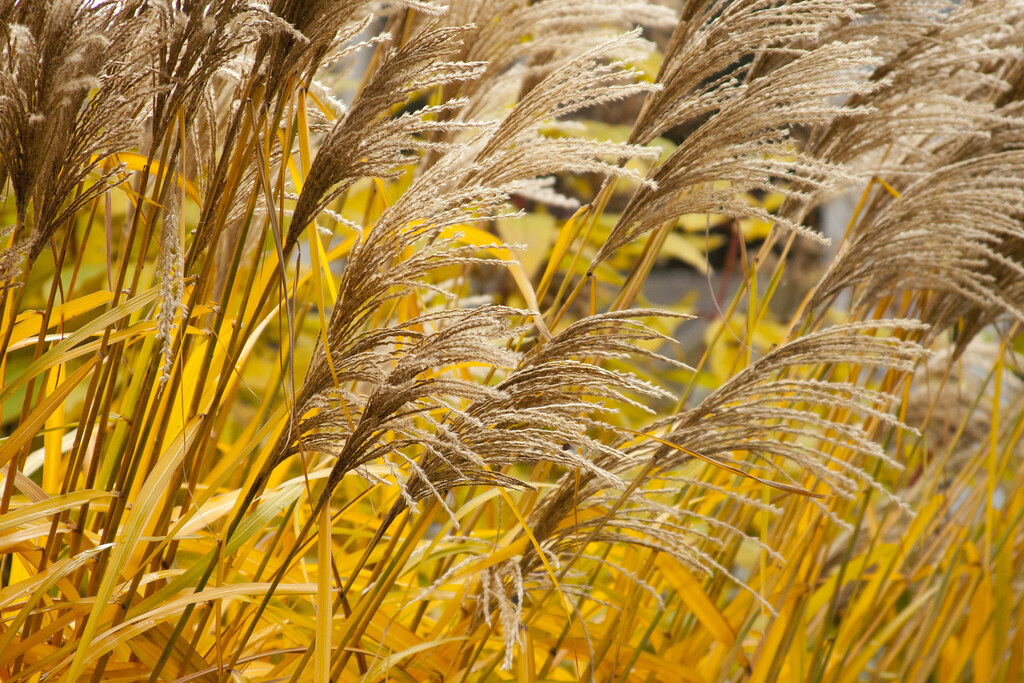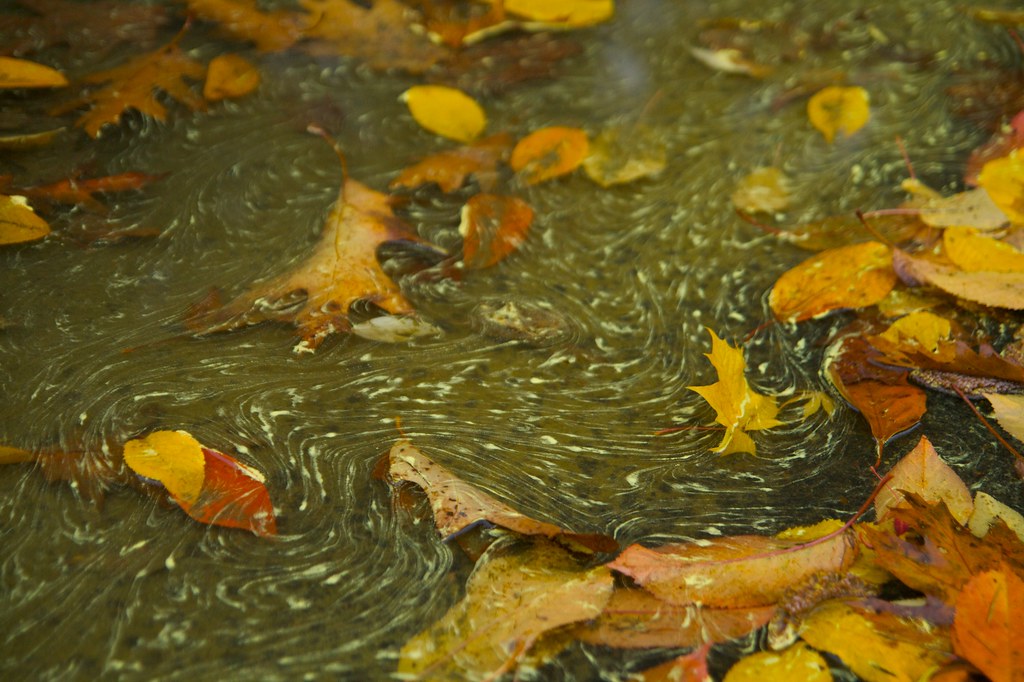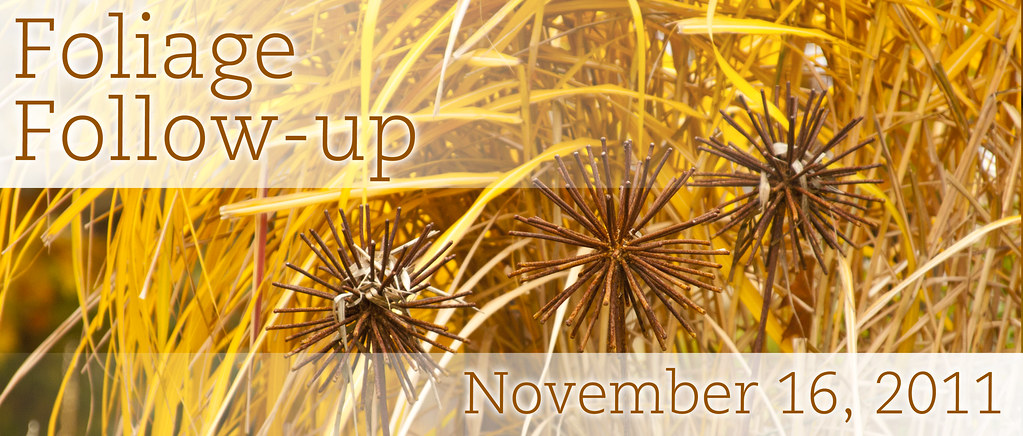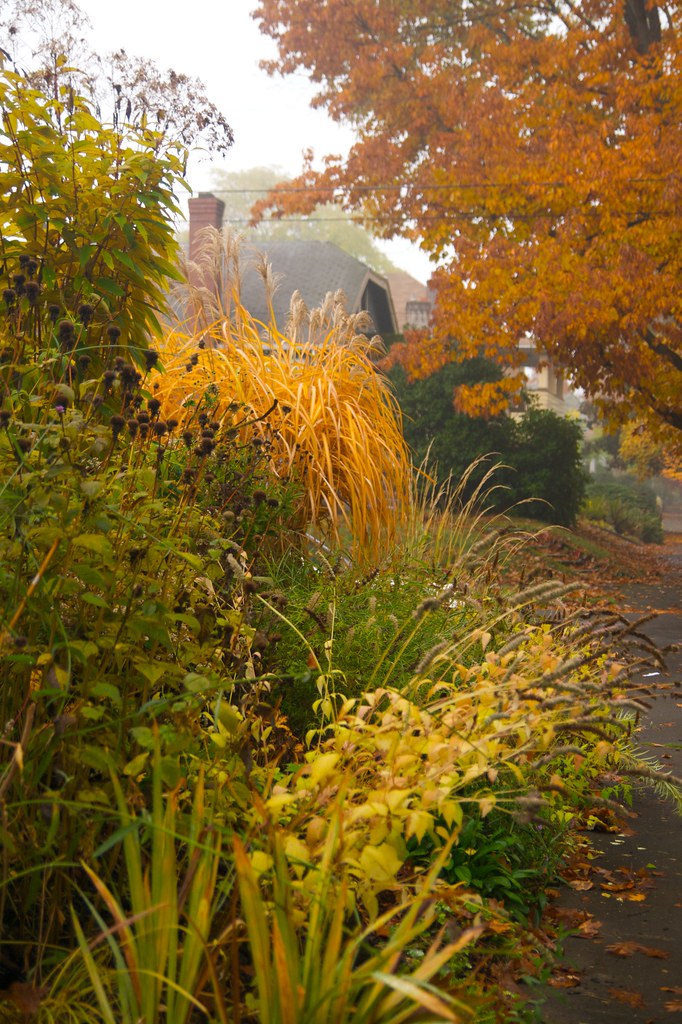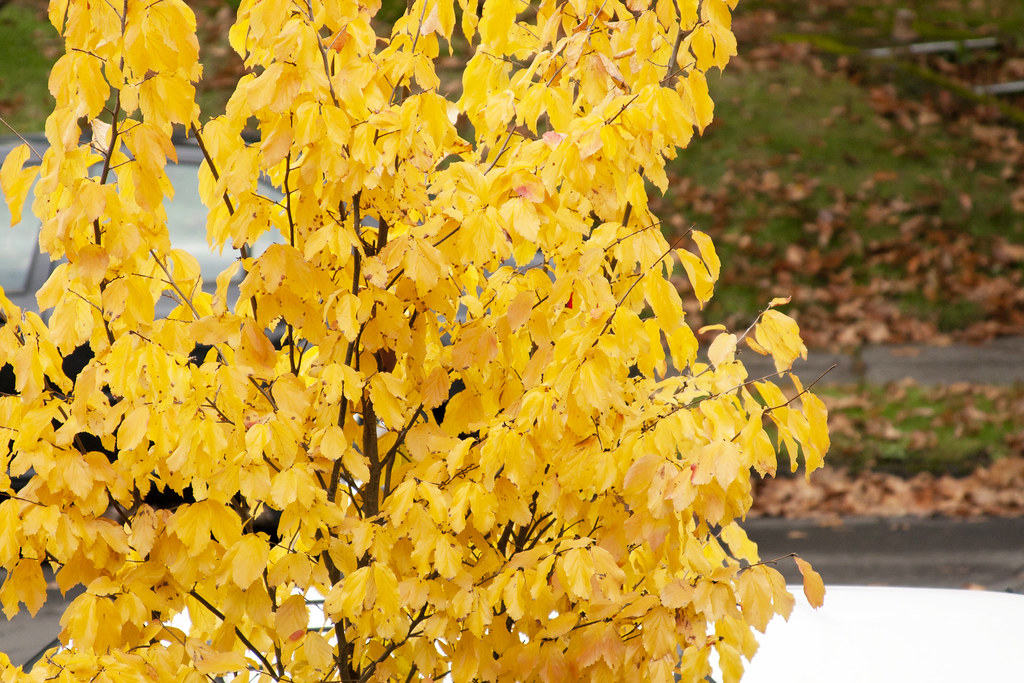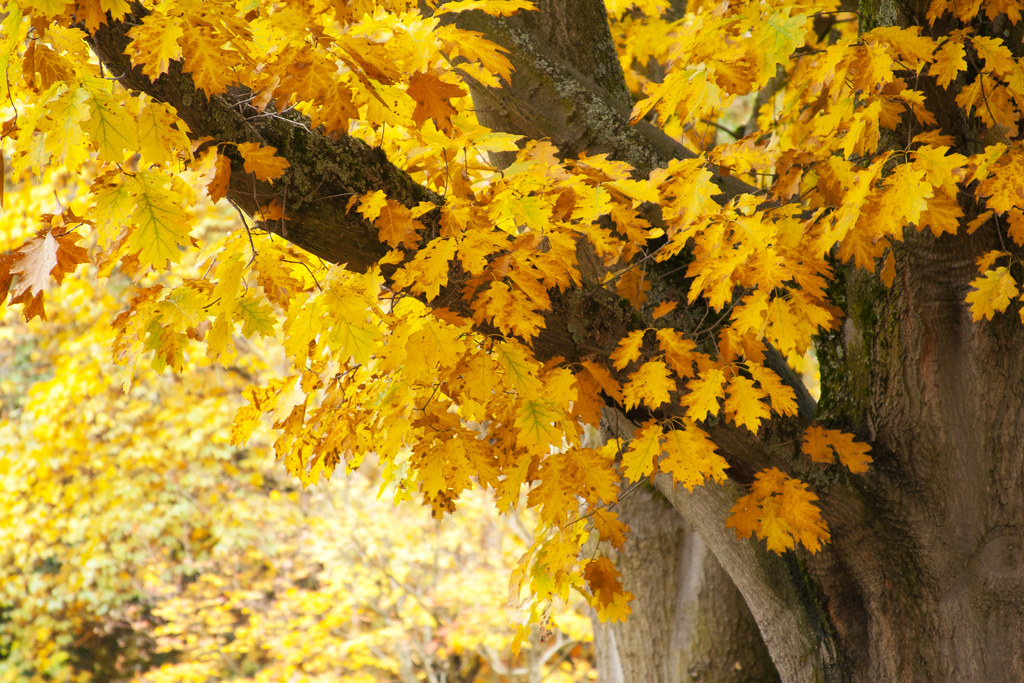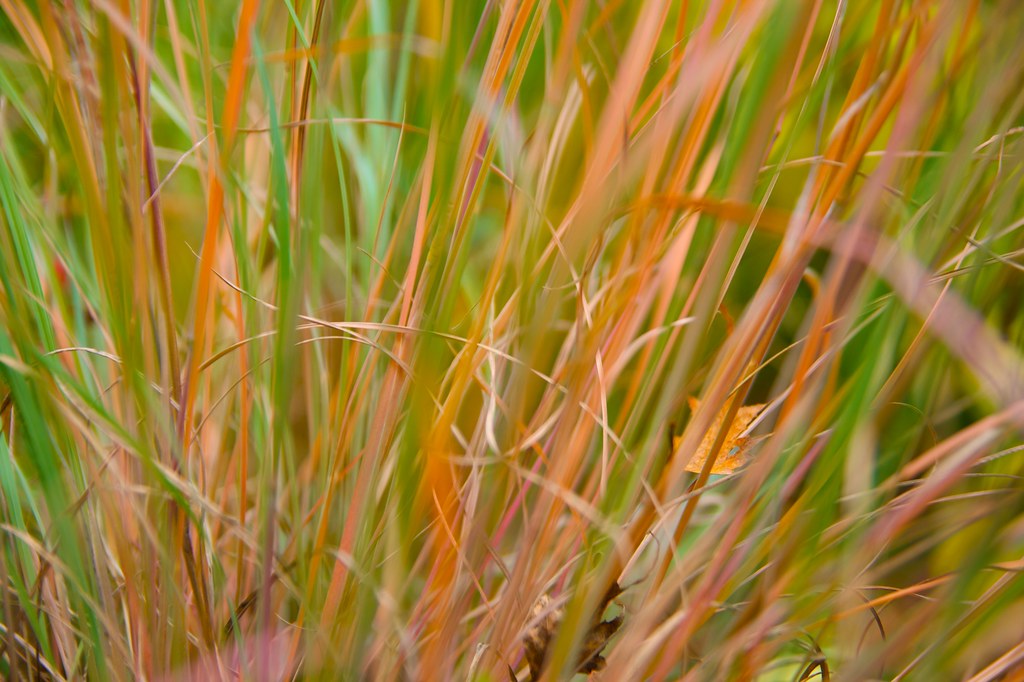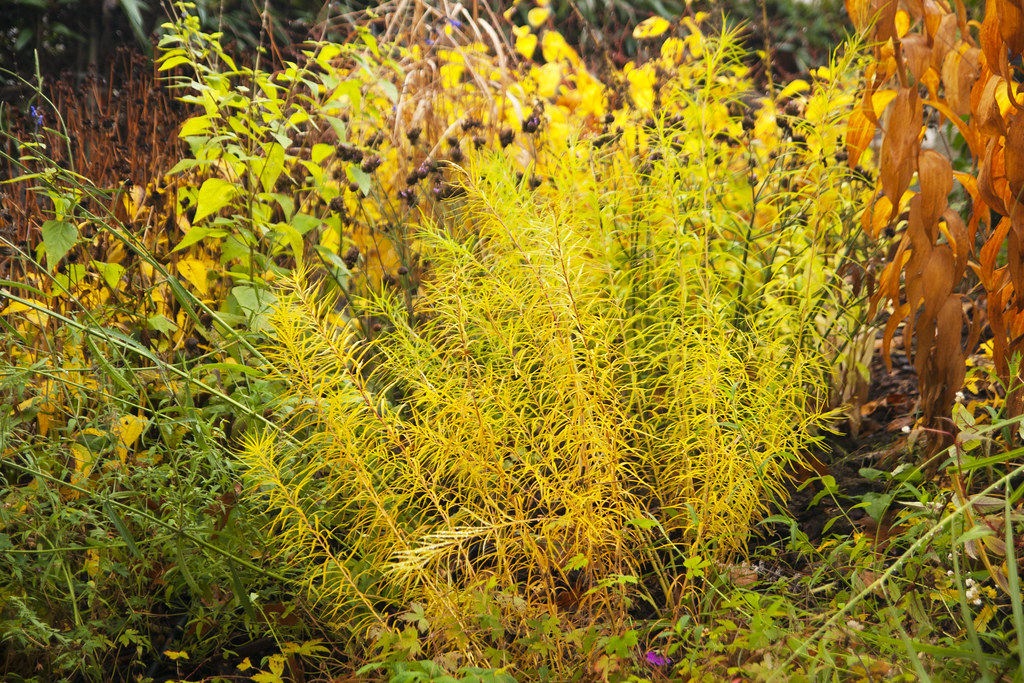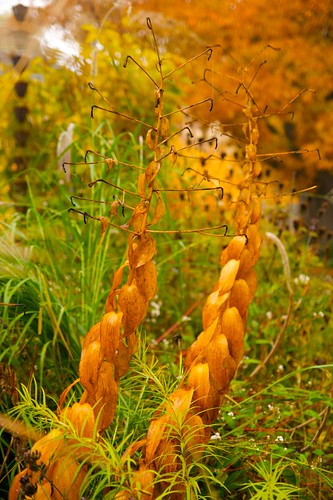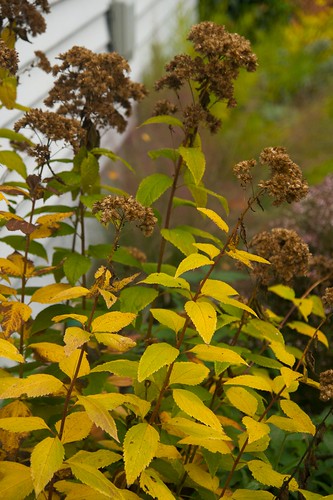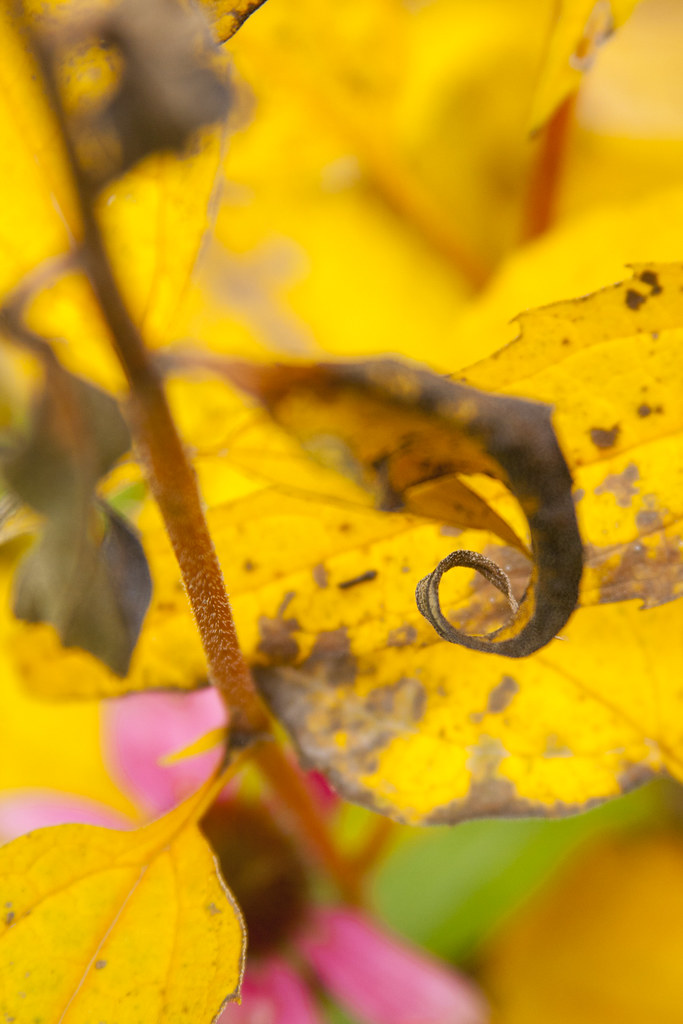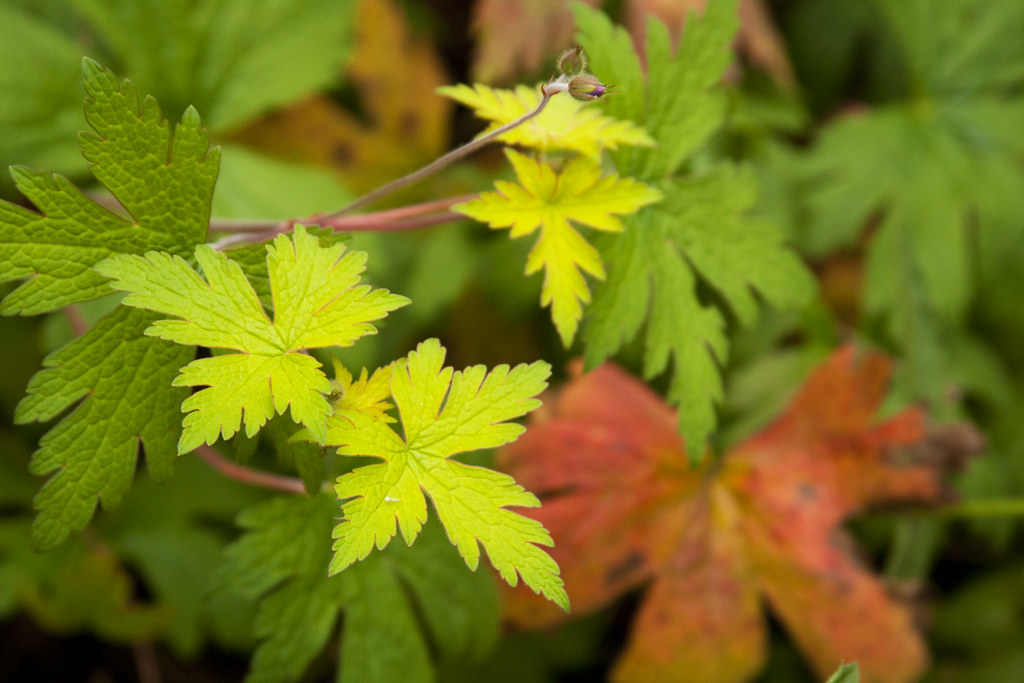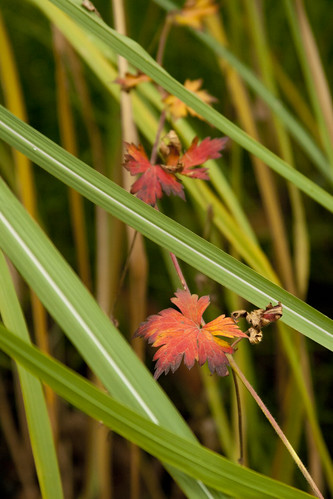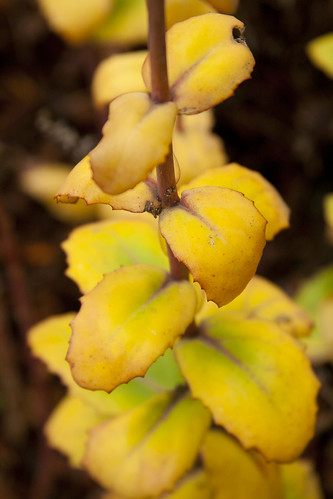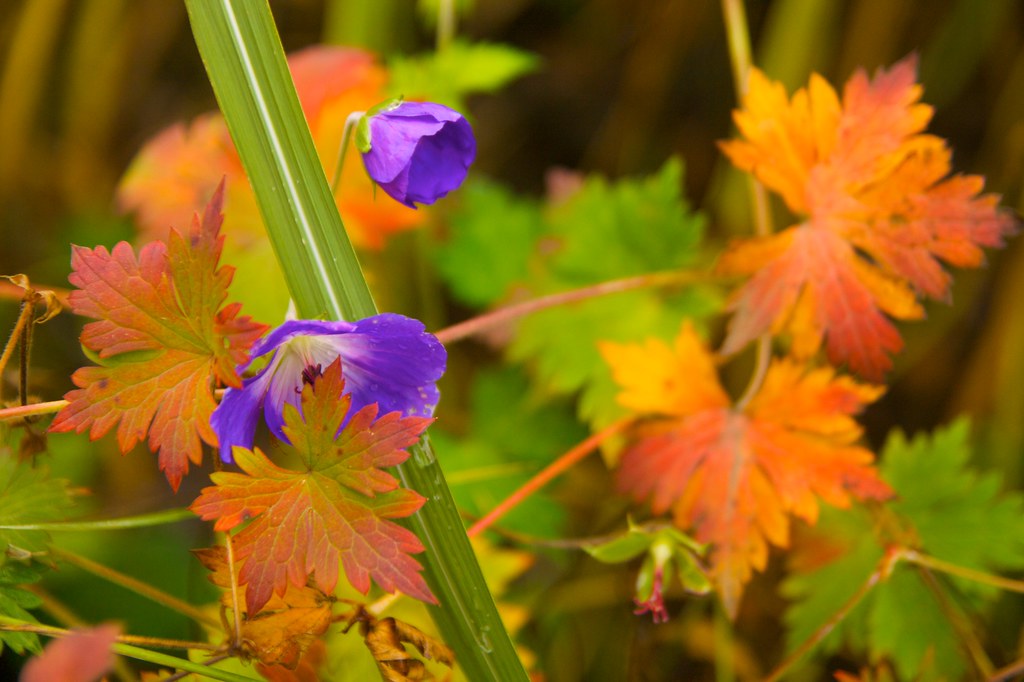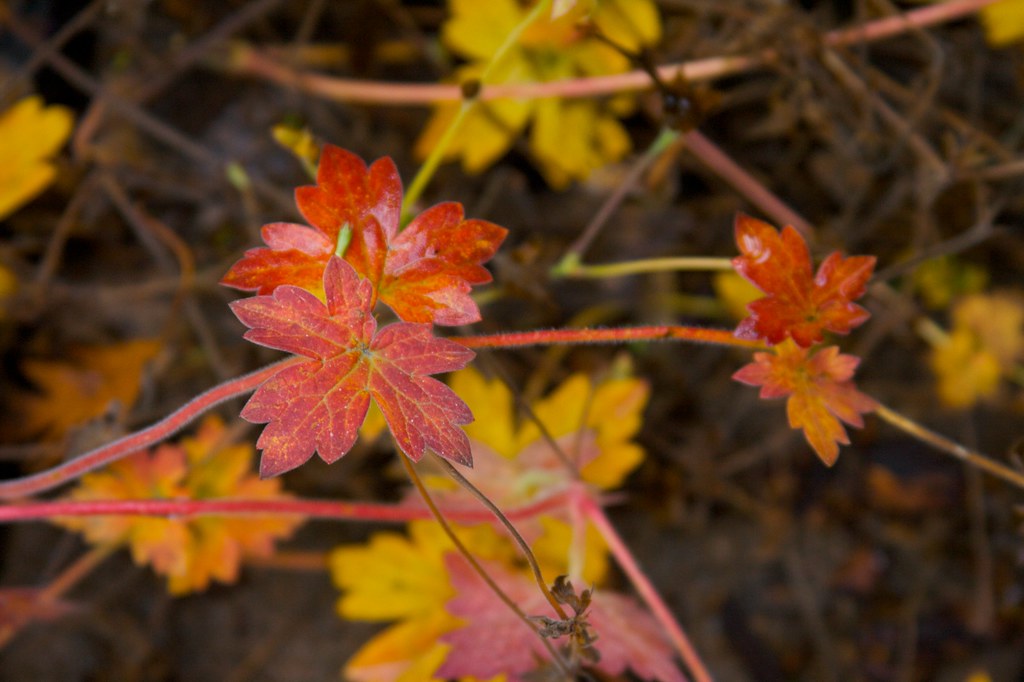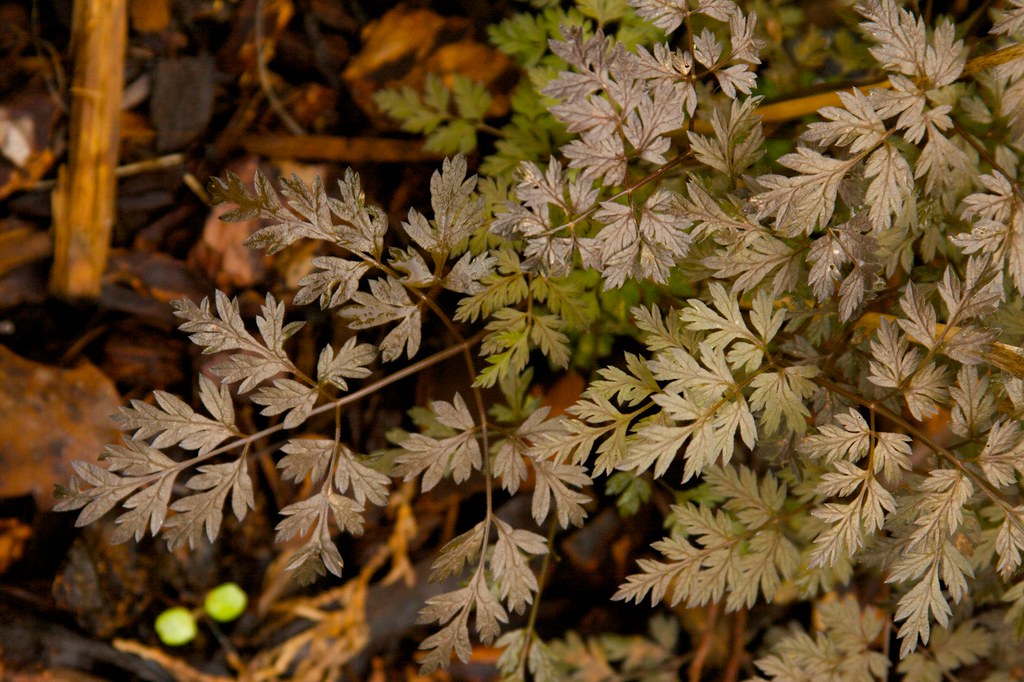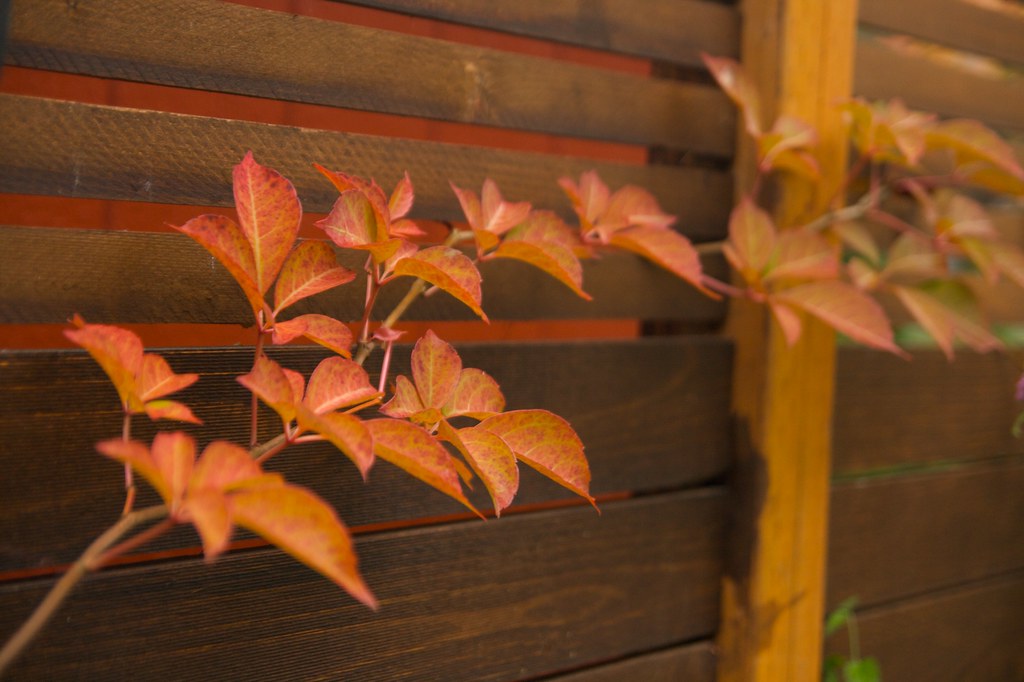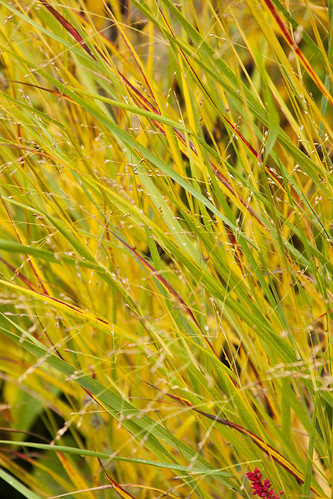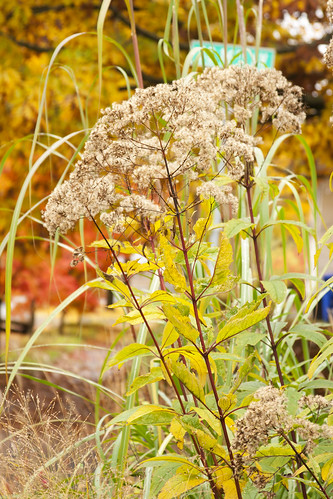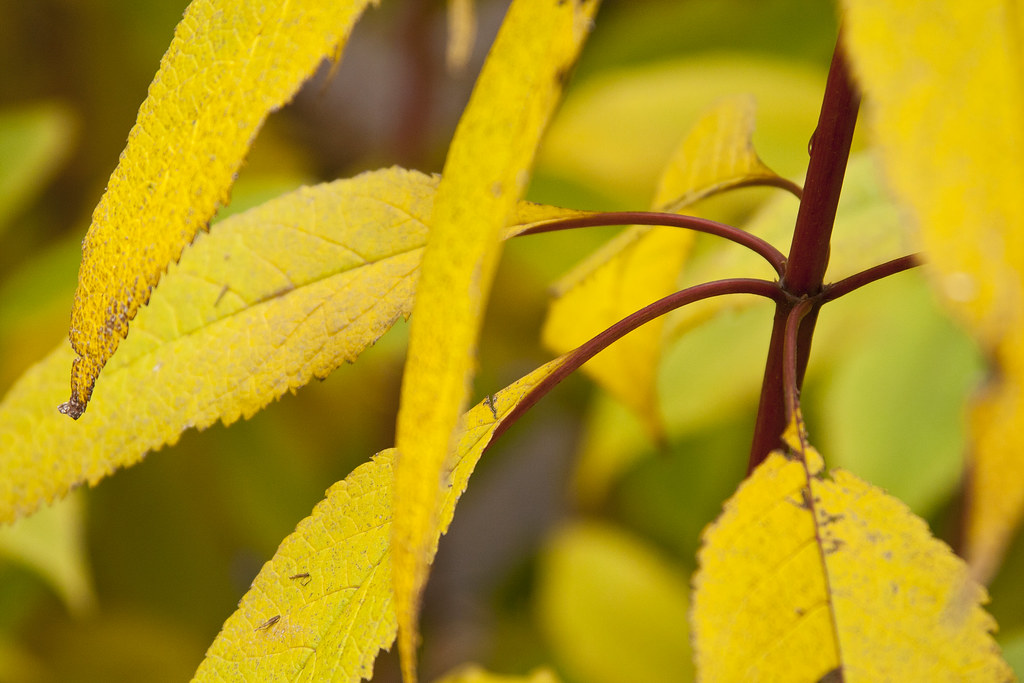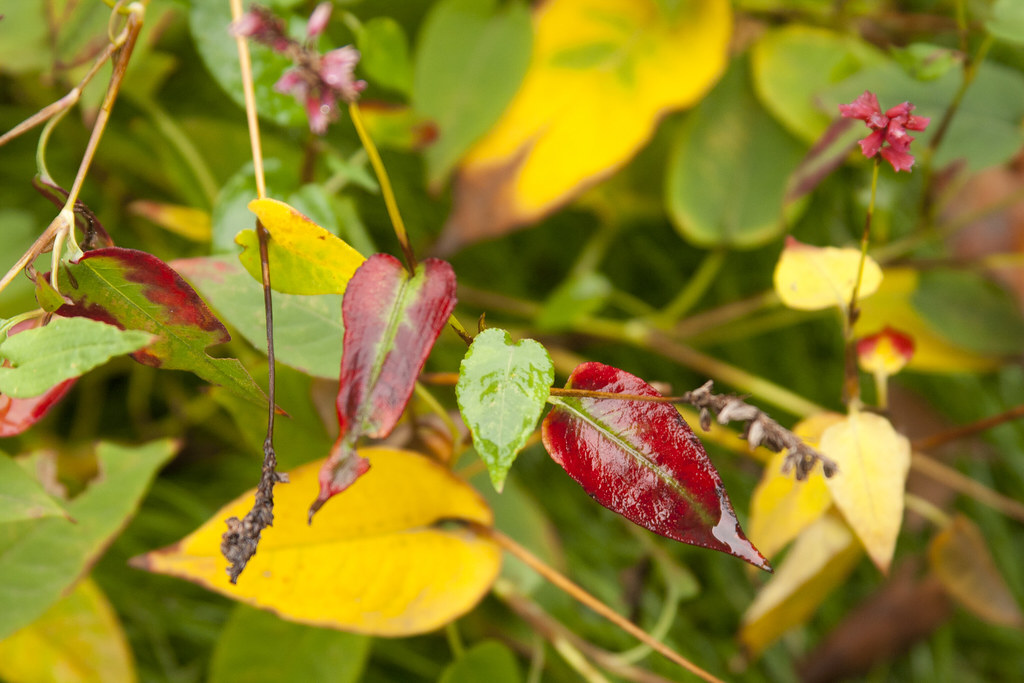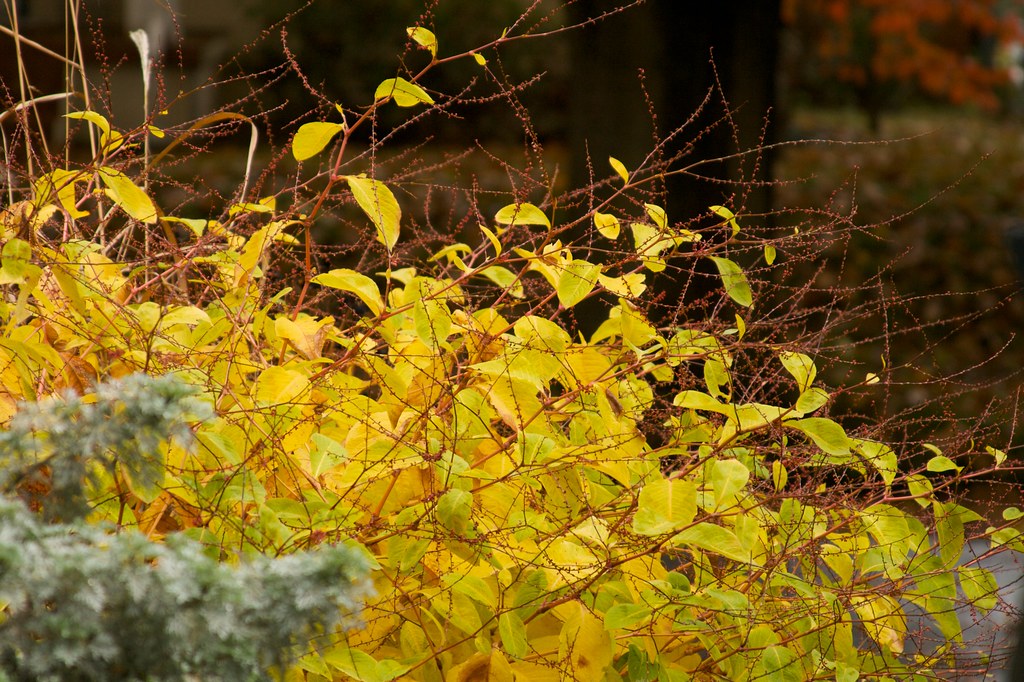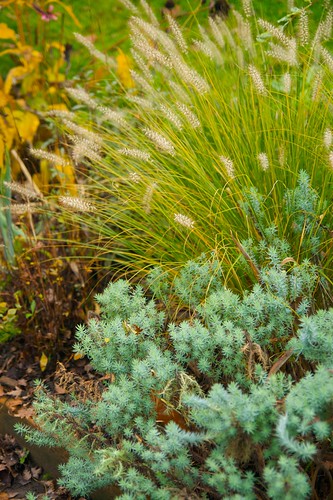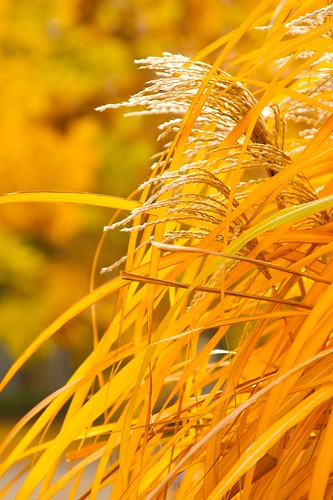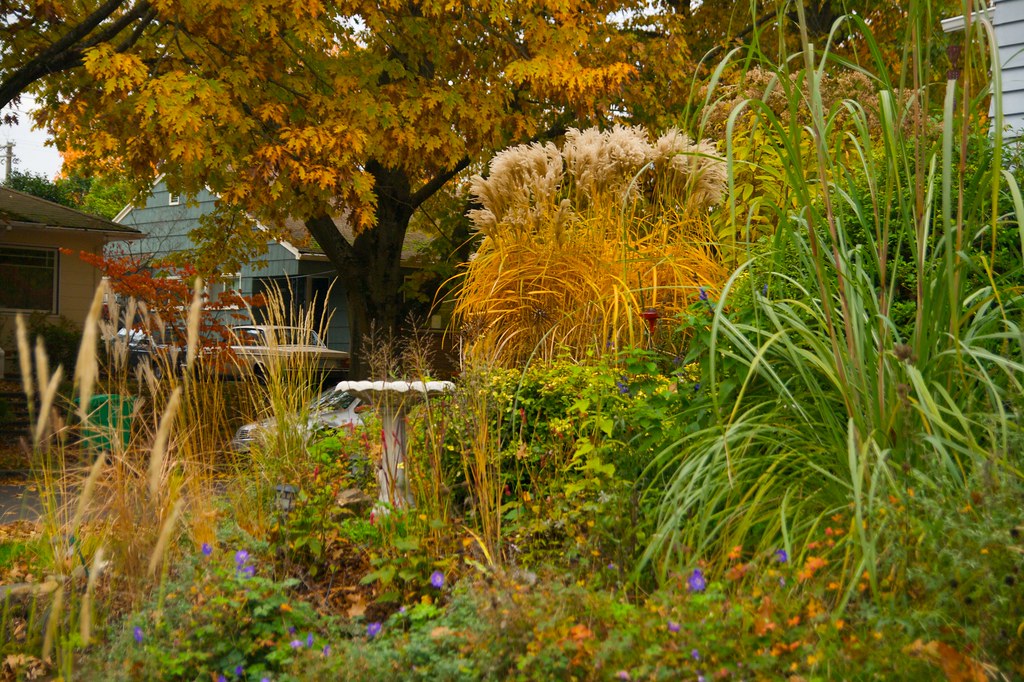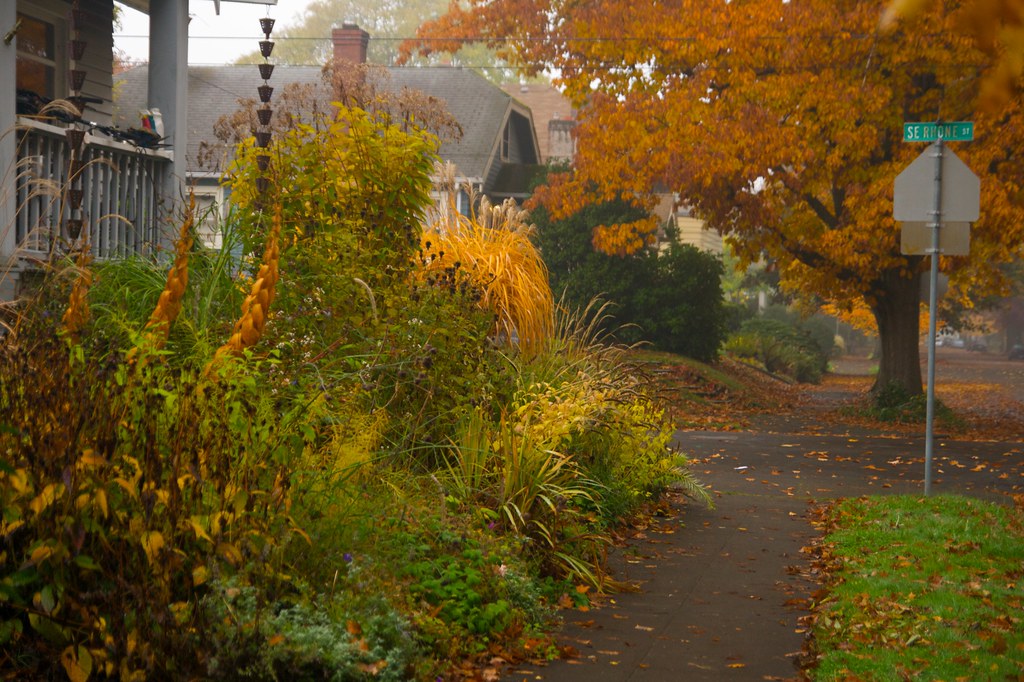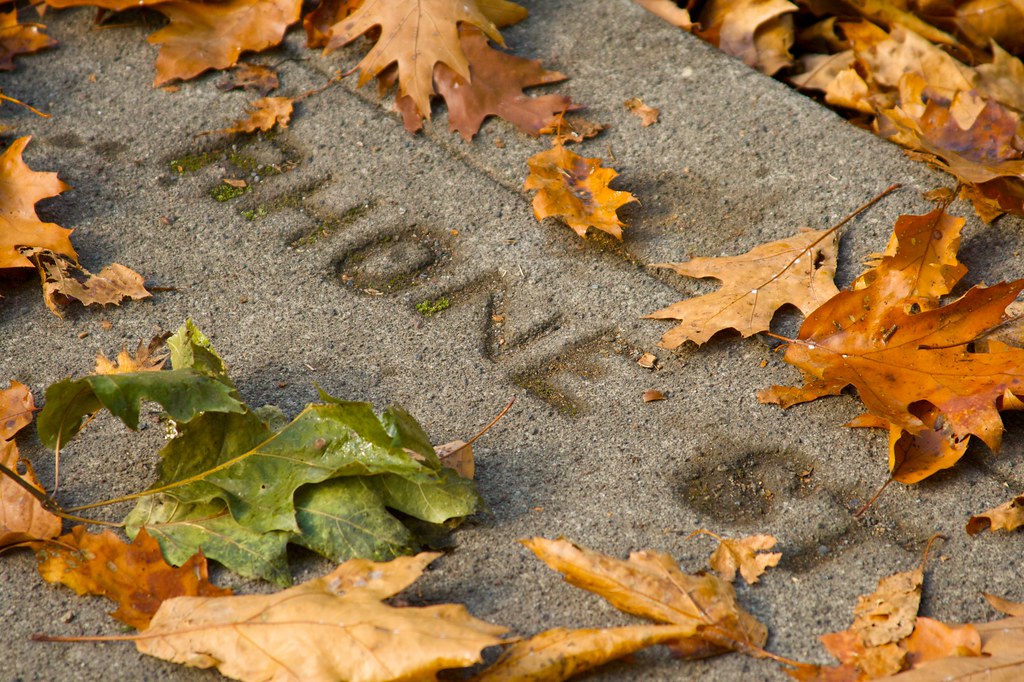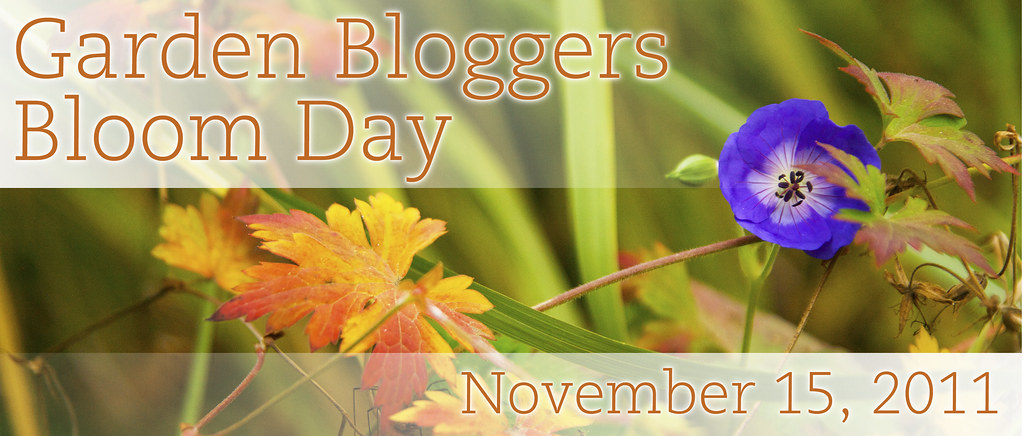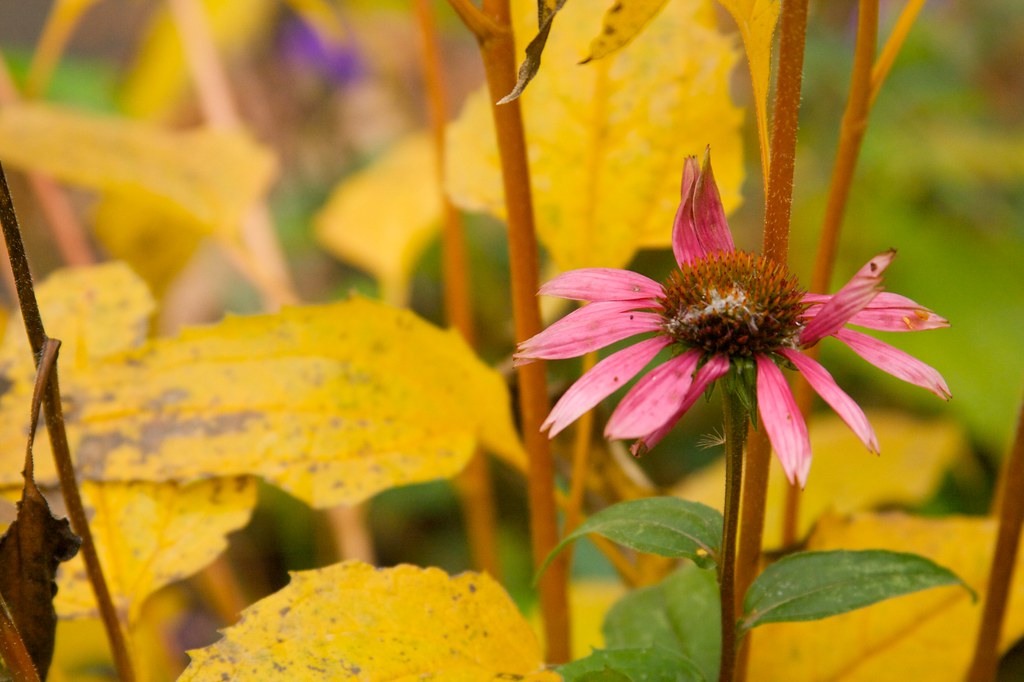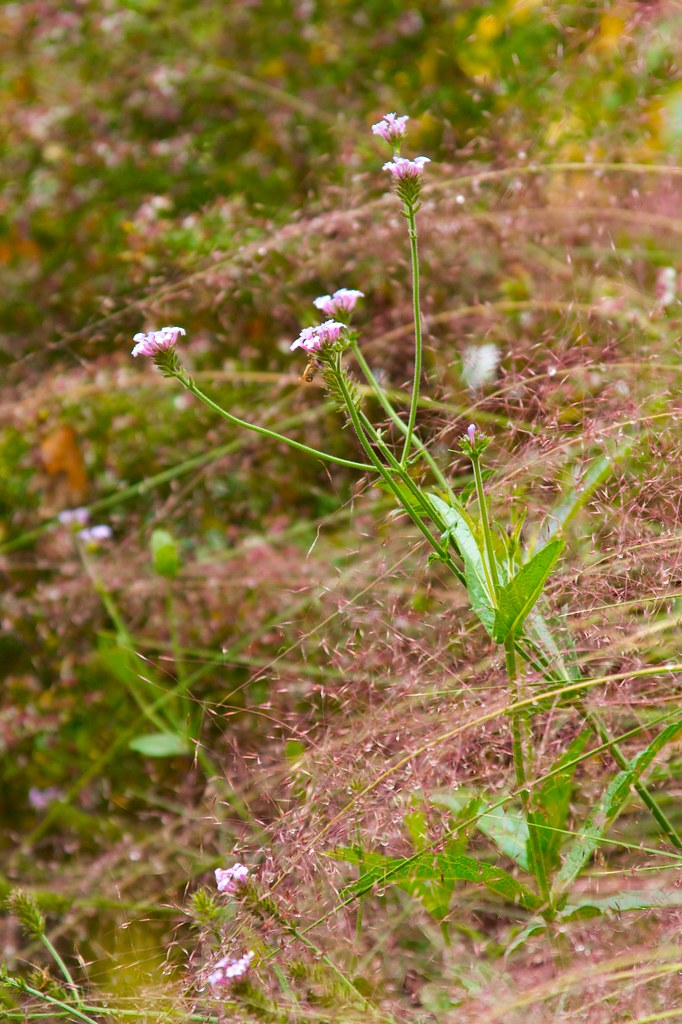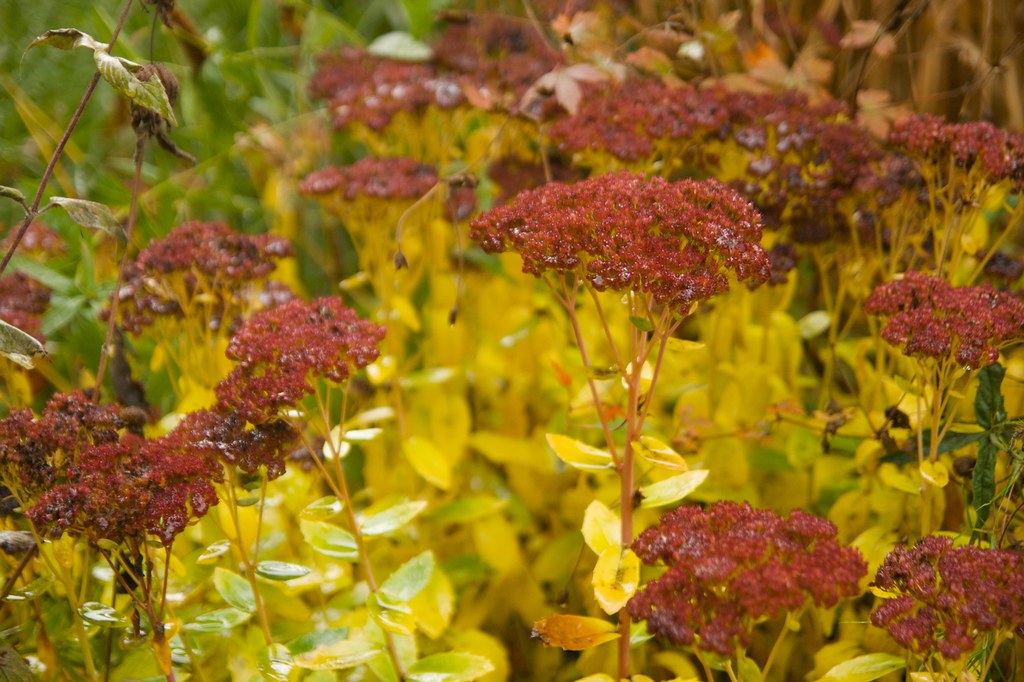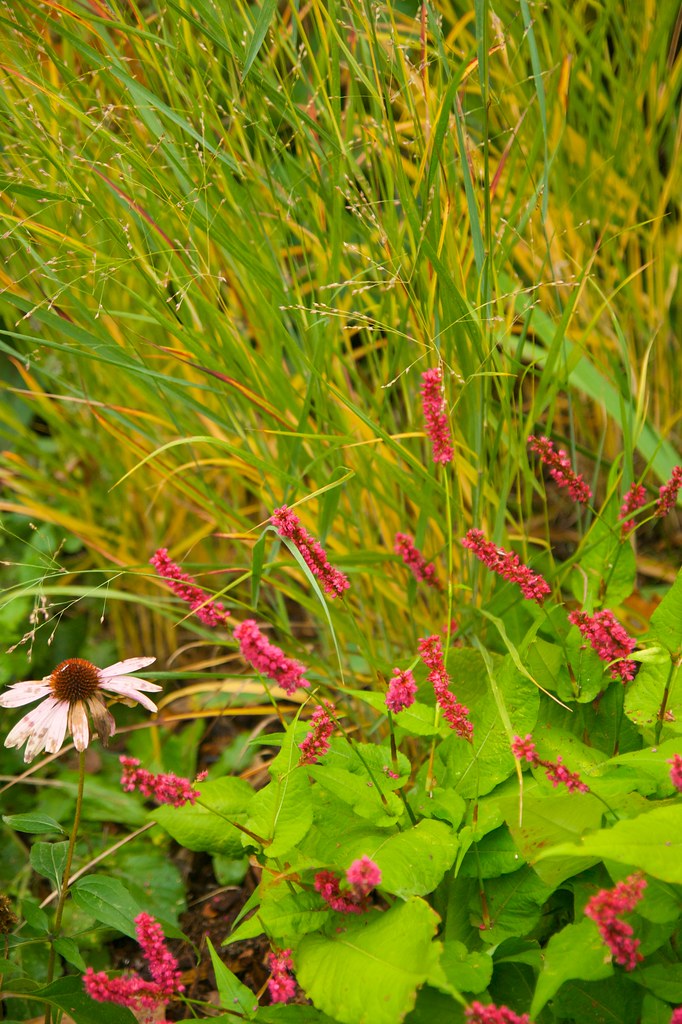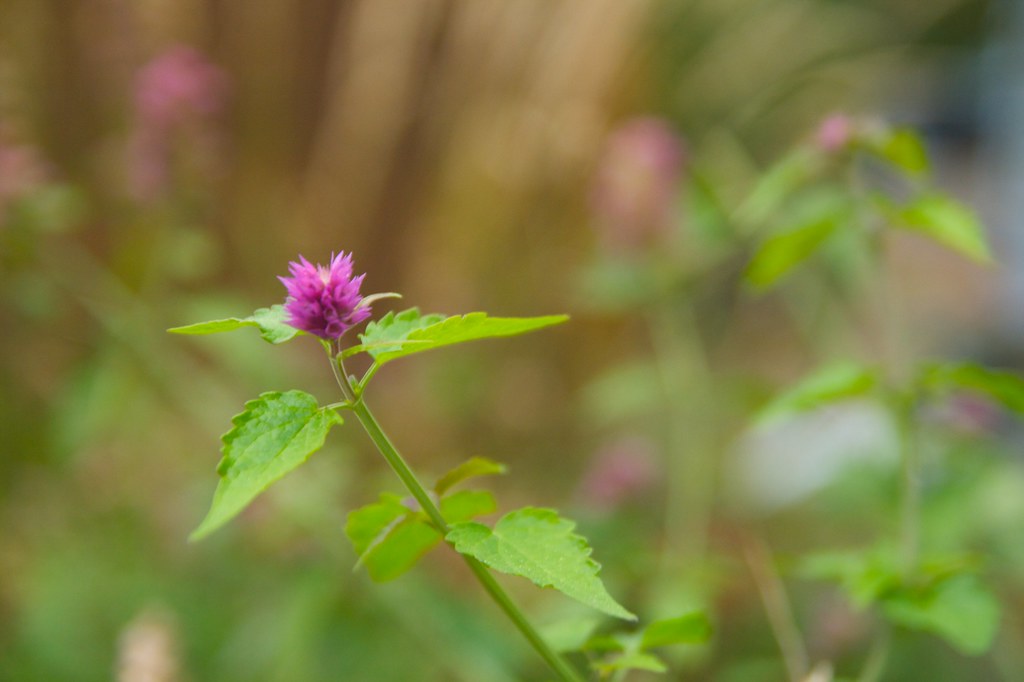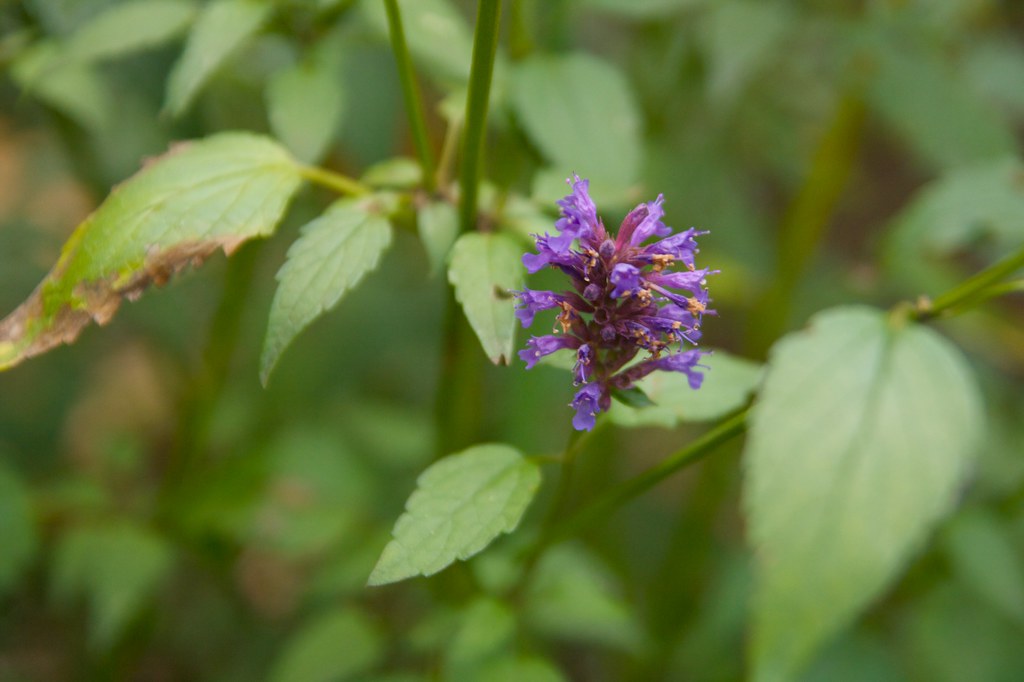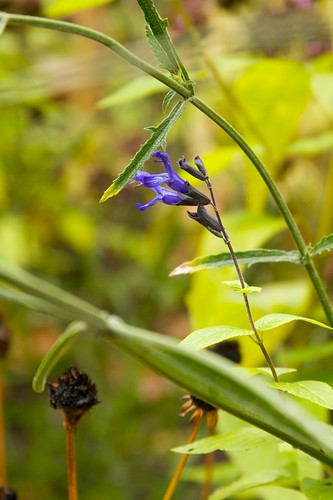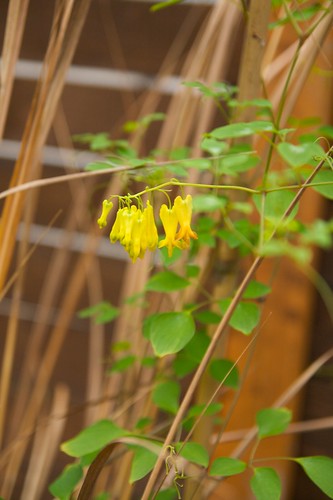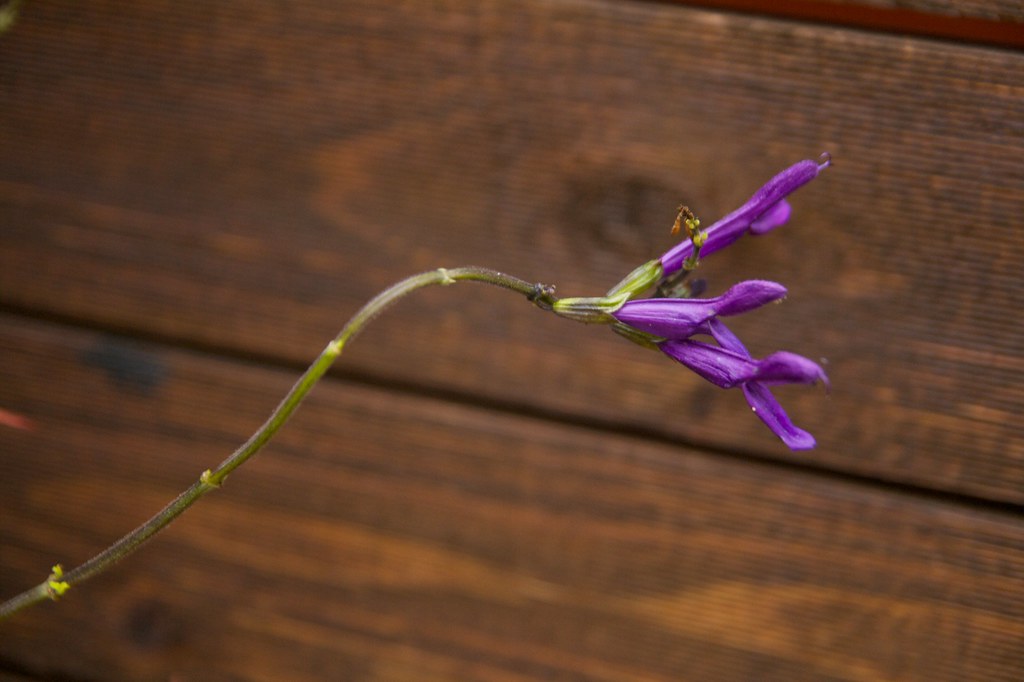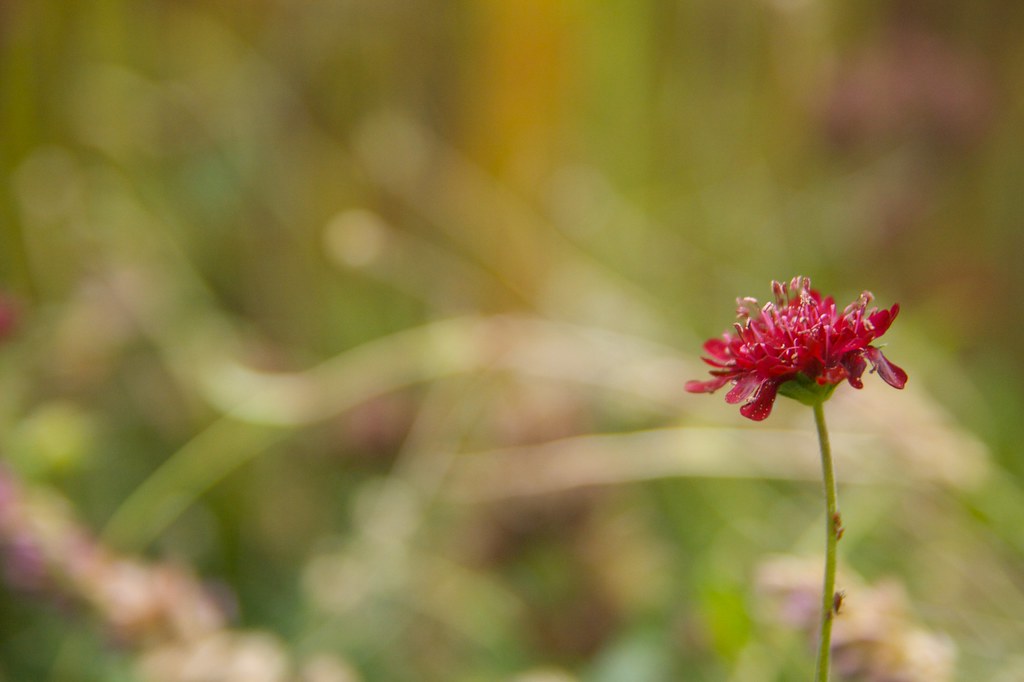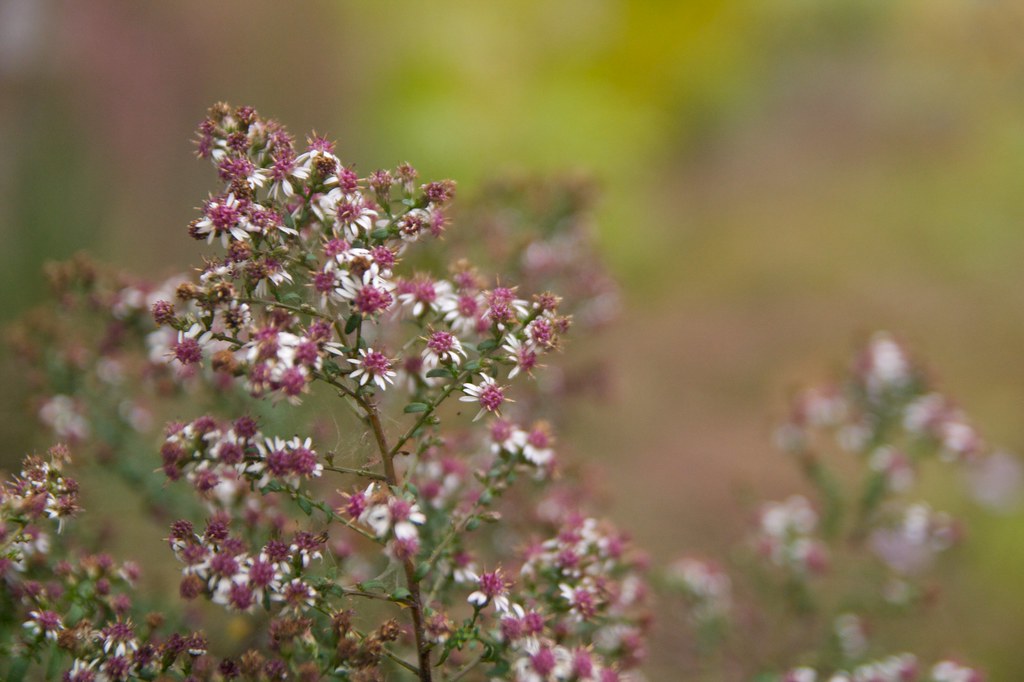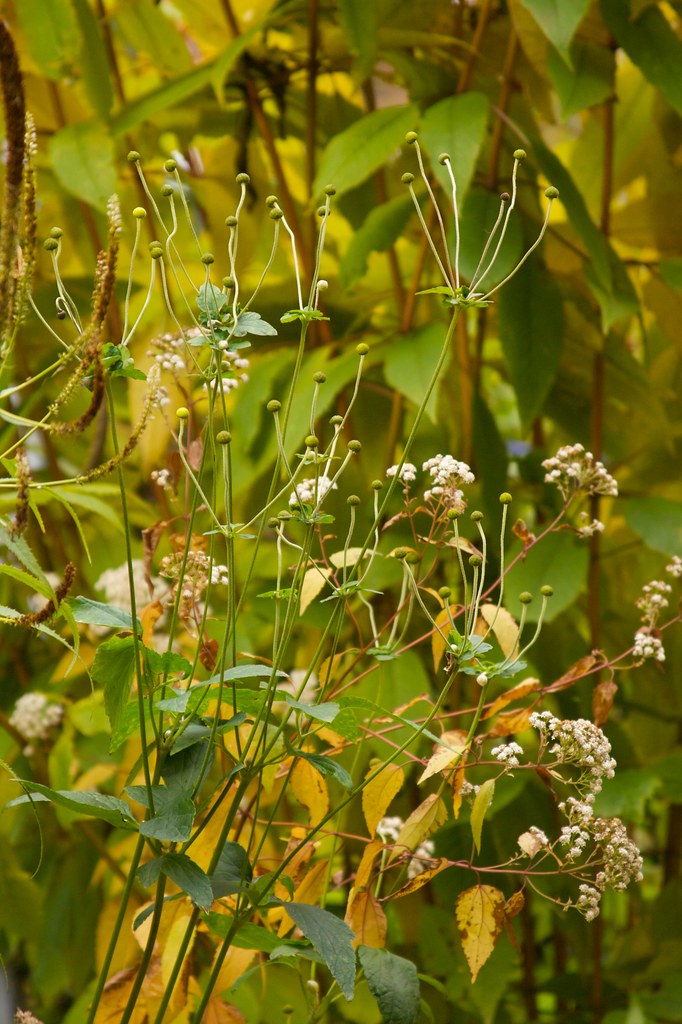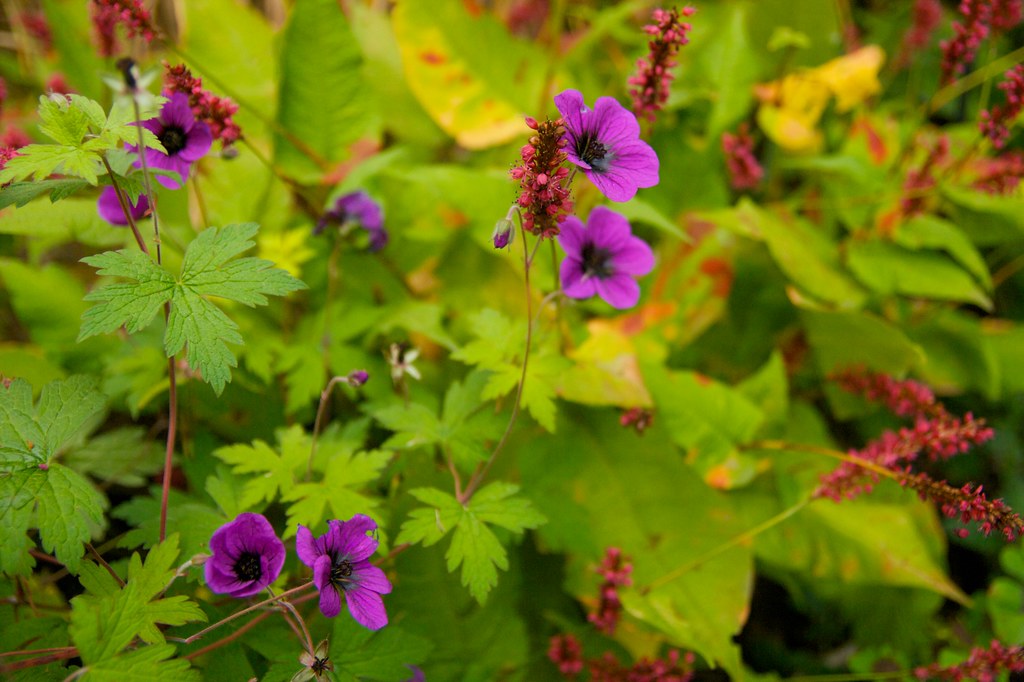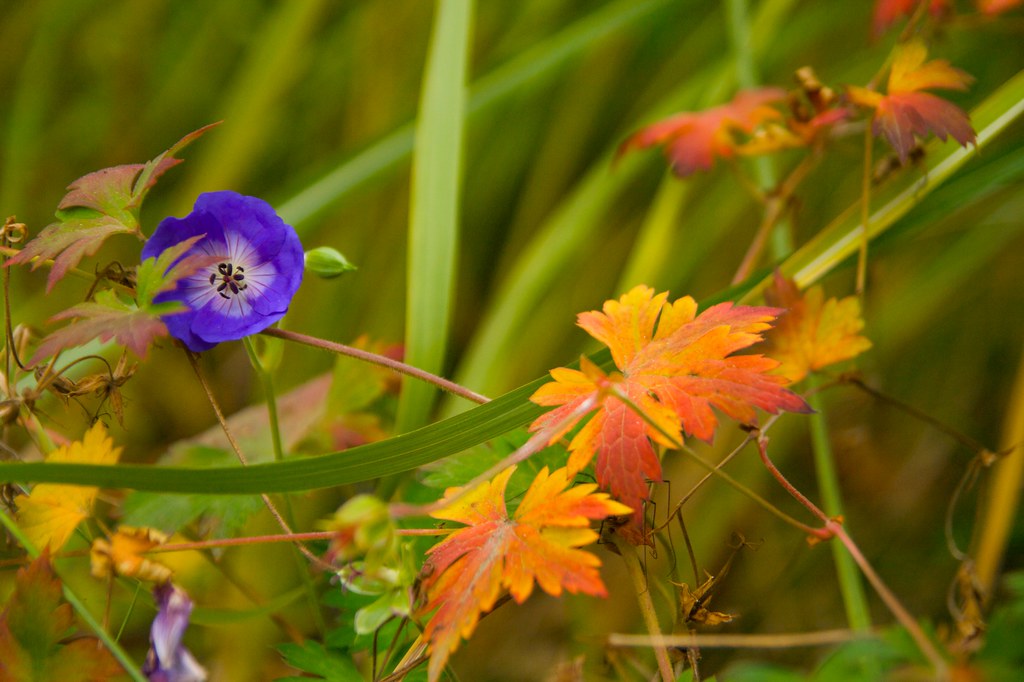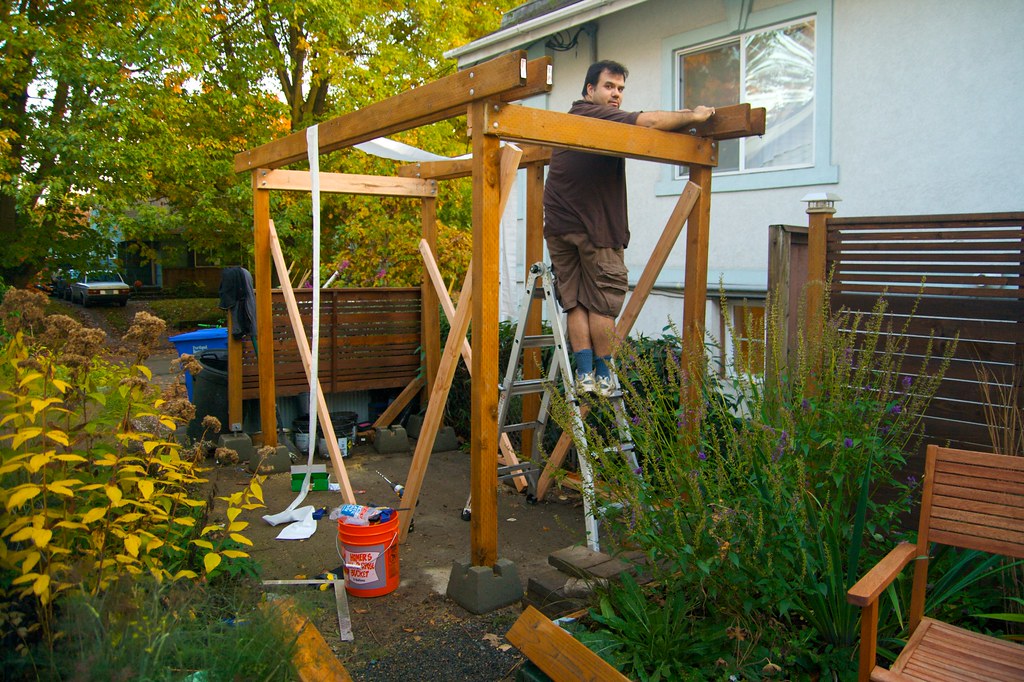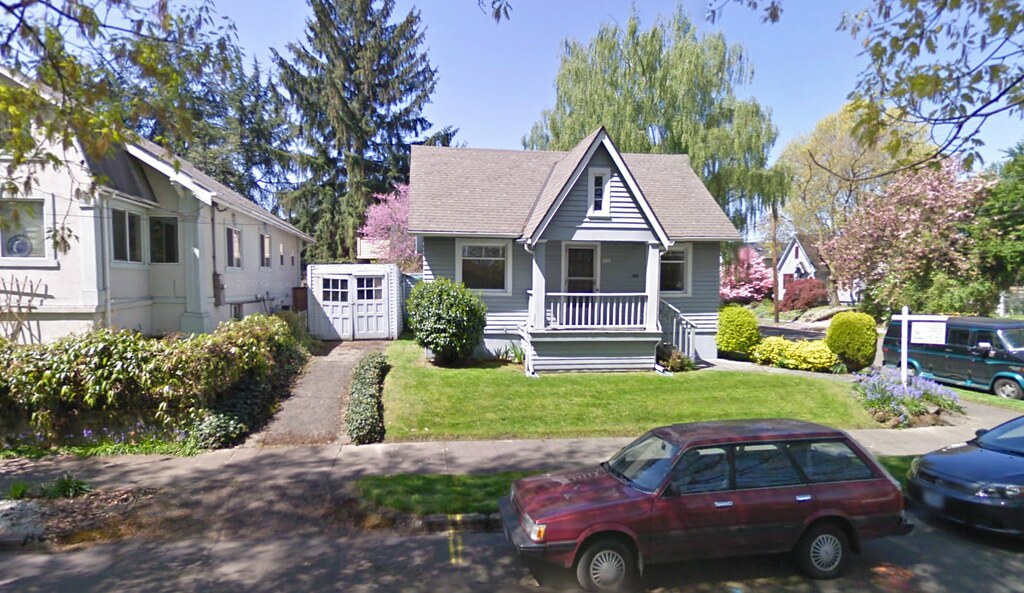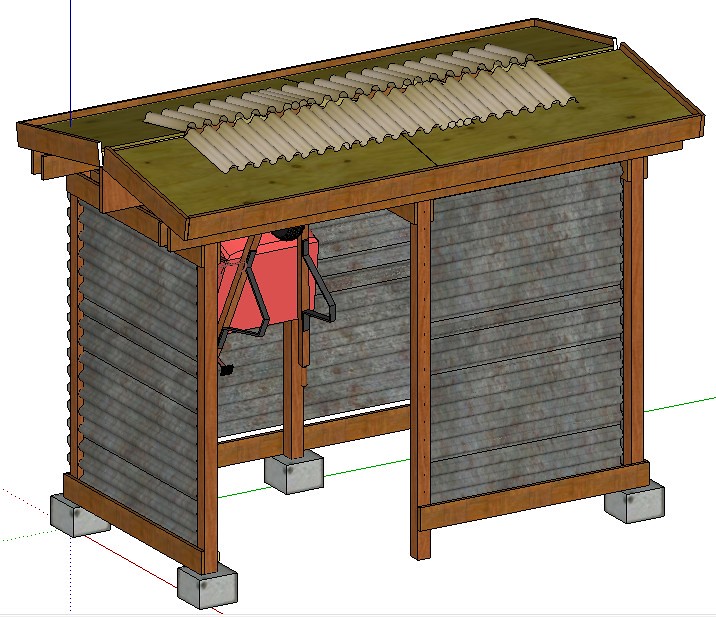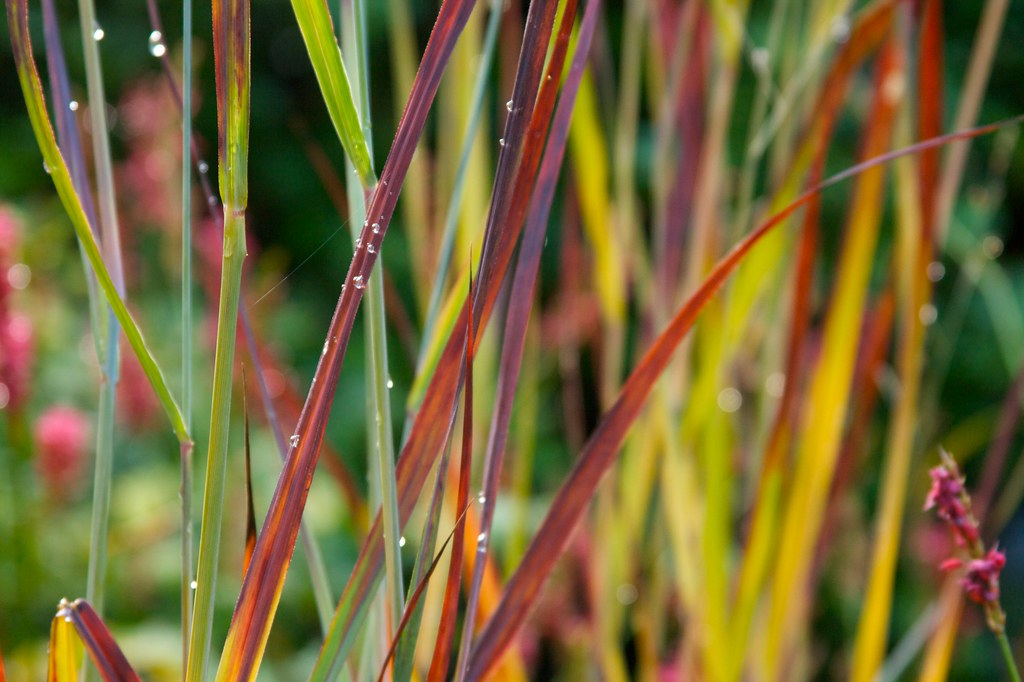 Panicum 'Blood Brothers'
Panicum 'Blood Brothers'
Wow, it's been a while since I posted anything...sorry! As I mentioned before, I caught a cold a few weeks ago that kinda sapped me. In addition, the past few weeks have been insane at work, leaving me a frail husk of a man in my off-hours! I finally caught up on sleep this weekend, however (thanks', partially, to "falling back"), and managed to get myself together enough for a real post! Hurrah! I've been meaning to do a post focusing on various grasses all summer, but never seemed to be organized enough...but here it is!
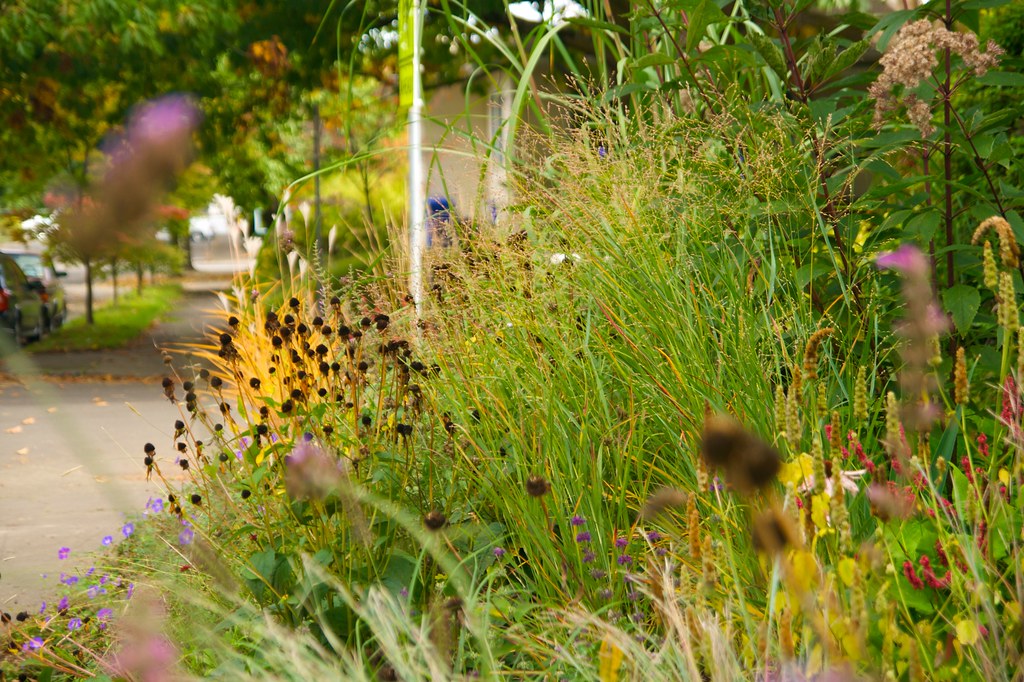 Grasses and sympathetic perennials
Grasses and sympathetic perennials
I think when I first got interested in grasses, I was really most drawn to ones that weren't particularly hardy for me (back when I lived in Nebraska). I really, really wanted to grow Misanthus...but they really, really didn't want to grow on the farm for me! Over the past few years, however, I've become more and more enamoured of our native grasses. During my recent trip back home to Nebraska, I was practically overwhelmed at being surrounded by all the amazing grasses that I had, of course, lived with most of my life. I guess it's a case of taking the things you see every day for granted.
Now I find that the grasses I love the most of the ones that were the main components of the tallgrass prairies I grew up surrounded by. Panicum, Schizachyrium, Sorghastrum and Andropogon. Of course, variety is the spice of life, and I wouldn't be without the non-natives either...but I've found renewed interest in these four groups...and the activity of breeders in the past few years have given us some amazing new garden-worthy cultivars.
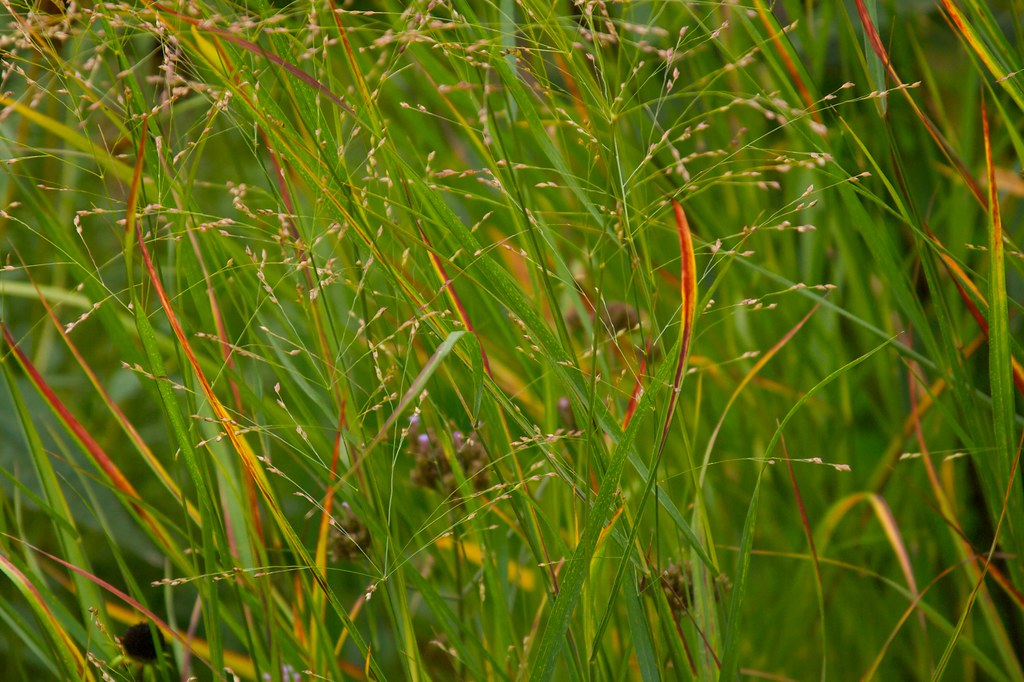 Panicum 'Shenandoah'
Panicum 'Shenandoah'
I can't express how much I love this little Panicum. In more sun, it would have been a column of rich red by now, but in my part-sun garden, it's coloring is quite a bit more modest. Nevertheless, it still maintains its form (very upright...no flopping) and manages to color up nicely (if subtly). Even if it isn't quite as vibrant as it should be, it provides wonderful structure and movement to the garden. This was its first full year in my garden, and I plan on reducing the water it gets next year by at least half (by fitting the drip hose with a lower output emitter). Eventually, this portion of the garden (with a few exceptions) should only need to be watered very infrequently.
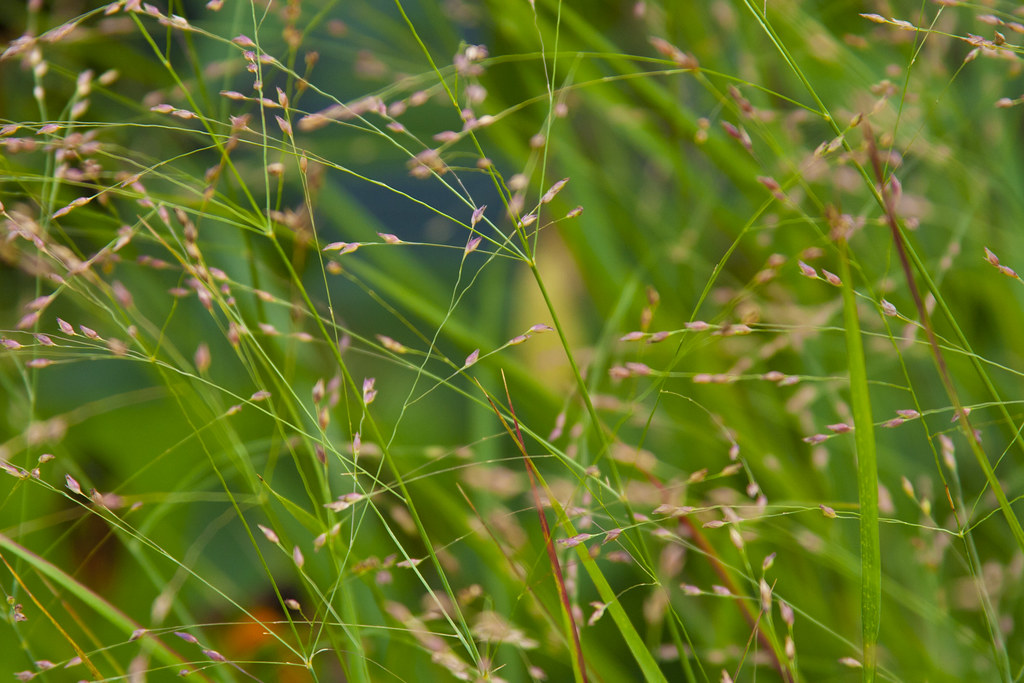 Panicum 'Shenandoah'
Panicum 'Shenandoah'
In mid-summer, this Panicum starts to throw out its tiny little metallic pink flower. While not as flashy as some grasses, they are produced in such a quantity, that there almost seems to be a pinkish haze hovering over them. I love how they move in the wind, and they provide a nice textural contrast to their more solid neighbors.
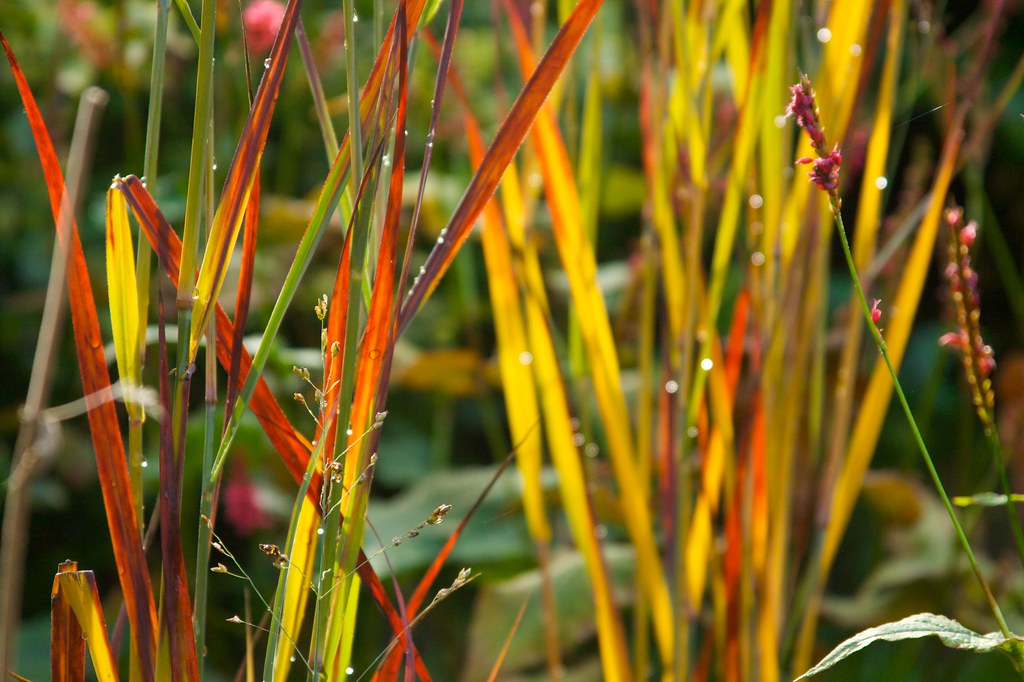 Panicum 'Blood Brothers'
Panicum 'Blood Brothers'
A new Panincum introduction that caught my eye earlier this year. Introduced out of Canada, this might be the single most beautiful red-colored Panicum I've ever seen (in person). I spotted a trio of them at Portland Nursery this summer. Although I had no idea where I would put it, I bought one on-the-spot. I got it home and kept looking for a place to put it...all the while, thinking about the other two I'd left behind. Not one to let something go easily, I went back the next weekend...and they were still there! I snatched them up without hesitation...still, with no idea where I'd put them! I finally moved a few things around a few weeks later and they are now situated right next to our front walk. I can't begin to describe how beautiful the coloring is on these. Their leaves have the same powdery-blue cast as 'Heavy Metal', but is brushed over with deep red highlights. The effect, when viewed straight on, is blue with purple highlights. When backlit, however, they are a veritably feast fo the eyes...more like stained glass than grass! I can't wait for these to bulk up and really make an impact.
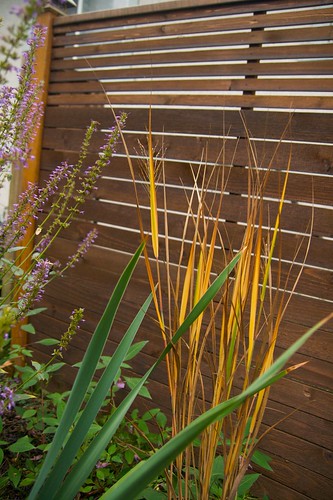 | | 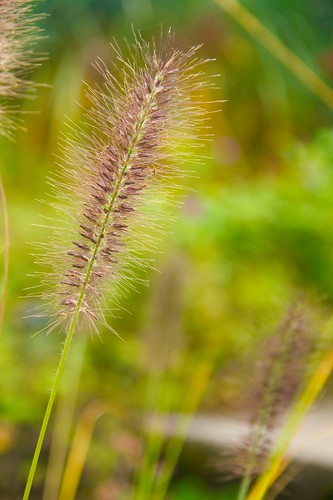 |
| Panicum 'Northwind' | | Pennisetum alopecuroides 'Red Head' |
'Northwind' is one of the loveliest of the Panicums, if, for no other reason, than for it's superb form. It stands bolt upright all season, providing wonderful structure. In the fall, it colors up earlier than many, turning a wonderful, vibrant gold. The color last seemingly forever. Now we focus on a different grass group, the Pennisetums. I've always loved these grasses, and there are quite a few to explore. One of my new favorites, purchased just this past fall, is 'Red Head'. It's habit is much like most Pennisetums, rounded and arching...wonderfully textural...I can never seem to walk by without reaching out to caress the leaves.
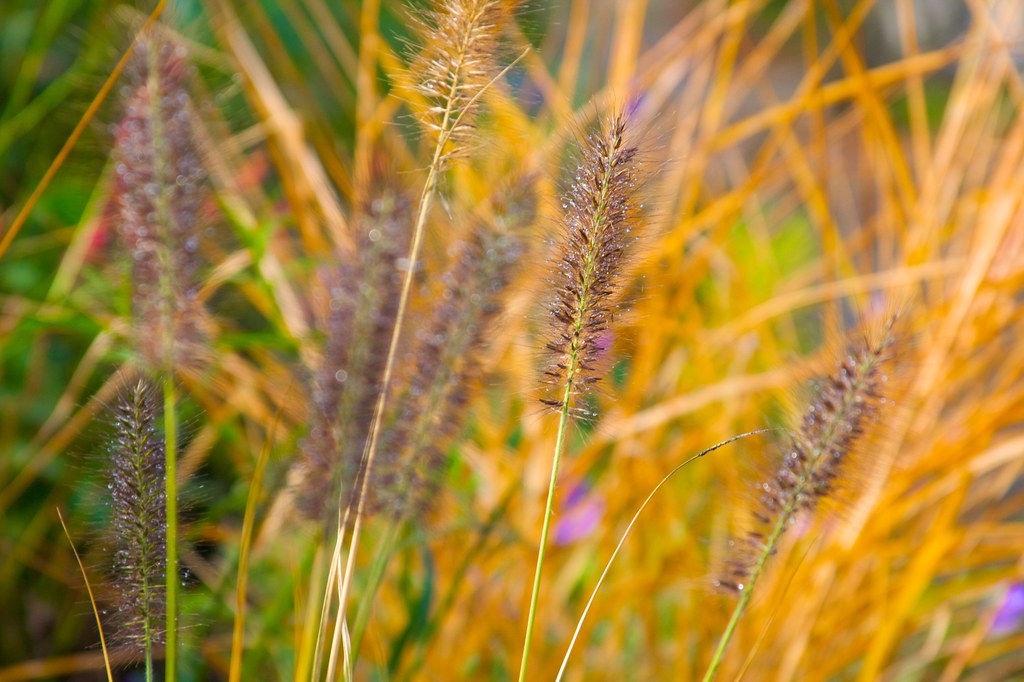 Pennisetum alopecuroides 'Red Head'
Pennisetum alopecuroides 'Red Head'
The blooms of 'Red Head' and a wonderful reddish-purple upon first opening, darkening to near-black at the base. As they age, they bleach to a soft beigy-tan. The benefit of this over the very similar 'Moudry' (of which I already had several) is that it blooms so much earlier, adding, literally, months of bloom time.
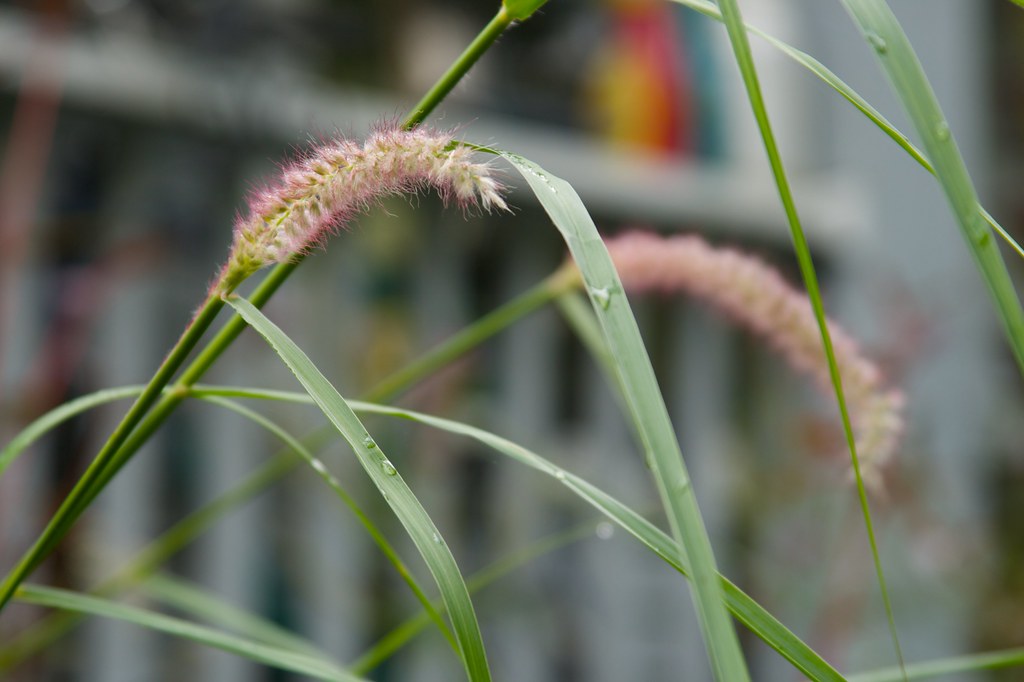 Pennisetum orientale 'Tall Tails'
Pennisetum orientale 'Tall Tails'
This is unlike any of my other Pennisetums, mostly due to it's impressive size! It somehow manages to get 6+ feet tall every year. Starting in mid-summer, it starts flowering...with enormous, foot-loot pink tapers. Unfortunately, it seems unhappy in its current location. I think it needs both more sun and space. I'll be moving it next spring into the North parking strip, which will hopefully provide both.
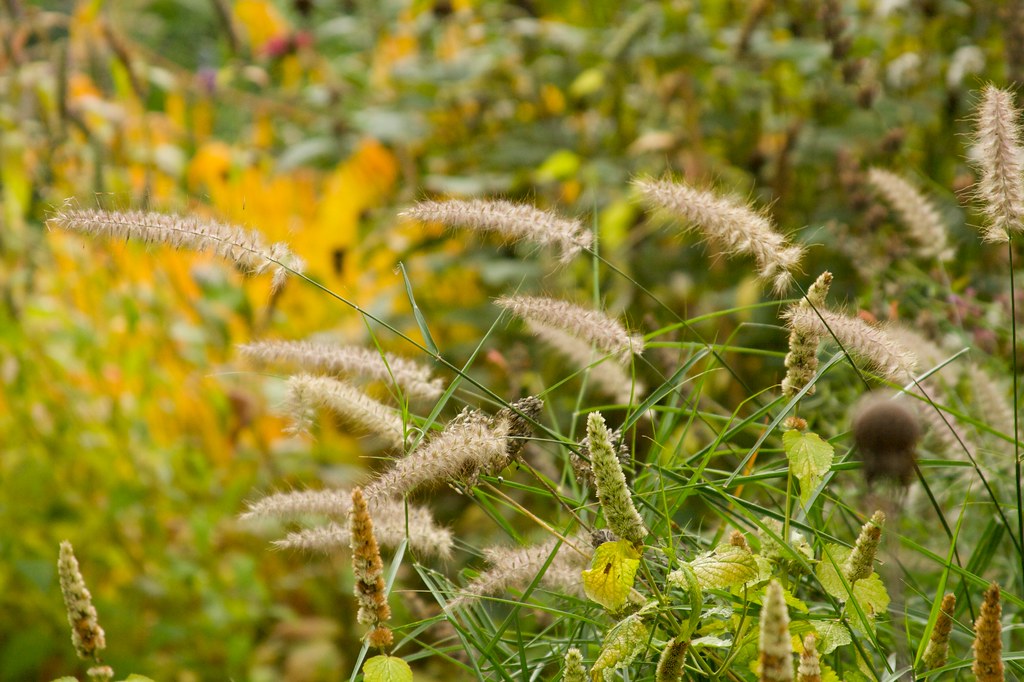 Pennisetum orientale 'Karley Rose'
Pennisetum orientale 'Karley Rose'
'Karley Rose' was actually my first Pennisetum. I saw it in bloom at a flower show and fell in love with those pink-tinted blooms. This is actually one of the very first grasses to bloom in my garden, starting as early as June. I absolutely adore the effect it has on the garden...unfortunately it flops badly for me (hmmmm....seems the Orientale-type Pennisetums have more tendancy towards flopping). I know it doesn't get as much sun as it wants...but I love it where it is, so am resigned (at least for the time being) to staking it up.
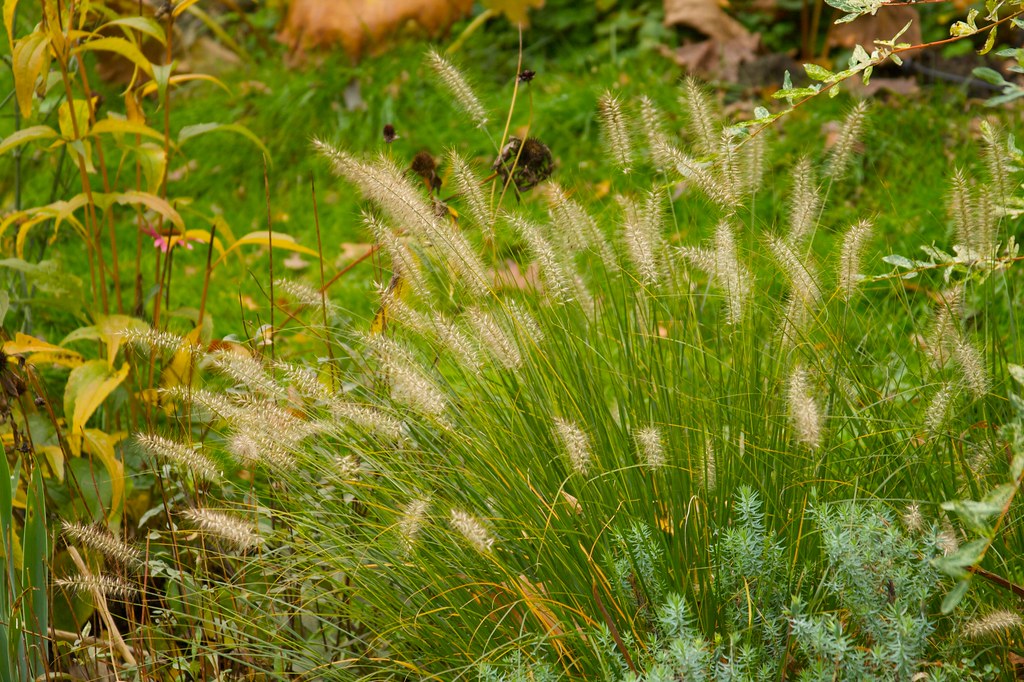 Pennisetum alopecuroides 'Hameln'
Pennisetum alopecuroides 'Hameln'
I'd say if there was a standard Pennisetum, this is it. Although some may view it with disdain (being a key component of so many mall parking lot plantings), I love it. It provides invaluable structure and texture for such a long time in the garden. Even before blooming, the mounded form is great...and the blooms (which emerge in mid to late summer) are the icing on the cake. I love the way they catch the light...and again, are such a tactile element in the garden. Beginning in early fall, the leaves start to turn bright yellow...giving the whole plant a wonderful two-tone, glowing effect...like the entire plant is shot-through with gold fibers!
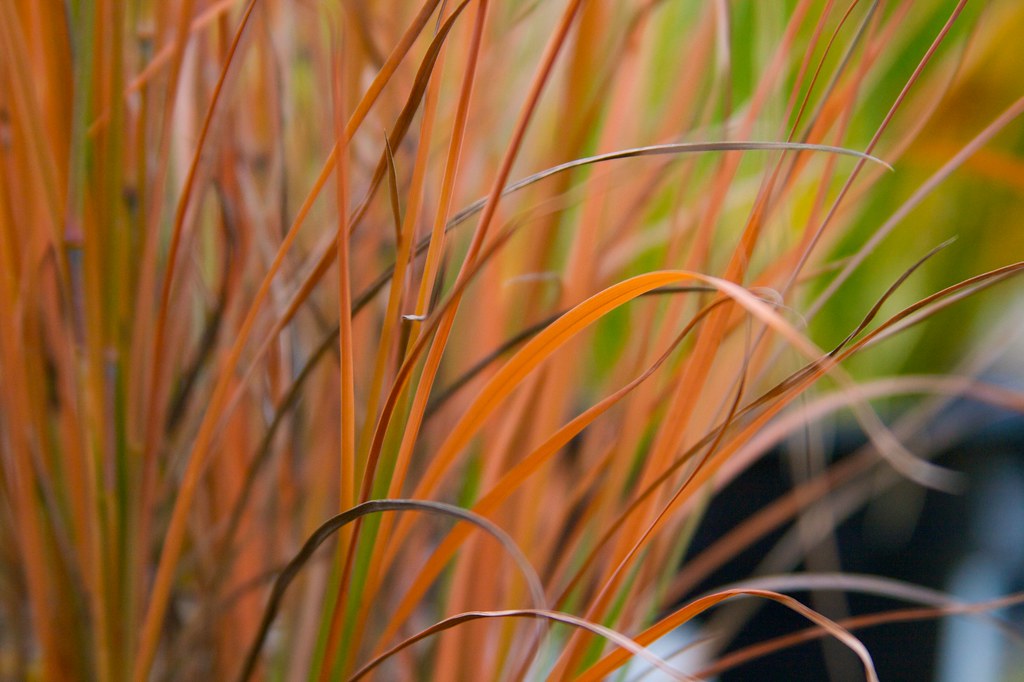 Schizachyrium scoparium (Little Bluestem) 'The Blues'
Schizachyrium scoparium (Little Bluestem) 'The Blues'
If there is one grass that I could somehow magically plant in everyone's garden...it would be Little Bluestem. Native to a huge portion of the continent, it's pretty much amenable to any condition you throw at it...with one condition...full sun. Sadly, as is the case too often in my garden, it doesn't get enough sun and proceeds to flop over like a sloppy drunk in September. I'm planning on moving it to my north parking strip next year, which should give it not only full sun (or the closest I'll ever get in this location), but also better drainage. I've seen them planted in full sun with probably no irrigation and they look AMAZING for it. The foliage emerges the most delicious powder-blue and forms a mostly-upright, arching clump for most of the summer. Come late summer, however, it stretches almost straight up with it's flower stalks. Right around this time (depending on weather) it also starts to color up. This is where it gets interesting...the colors are the most indescribably beautiful mix of pink, purple, orange, red, yellow and blue...it's crazy-beautiful! The color continues to intensify right up until frost. To see one of these grasses in the right sight, lit by the angled autumn sun is truly wonderful. I plan on adding more next year...of a different variety. I've been researching and apparently there is a newer variety called 'Blue Heaven' which has all the strengths of 'The Blues' without it's weaknesses (tendency to flop). In addition, 'Blue Heave' is supposed to get 4' tall! Sign me up!
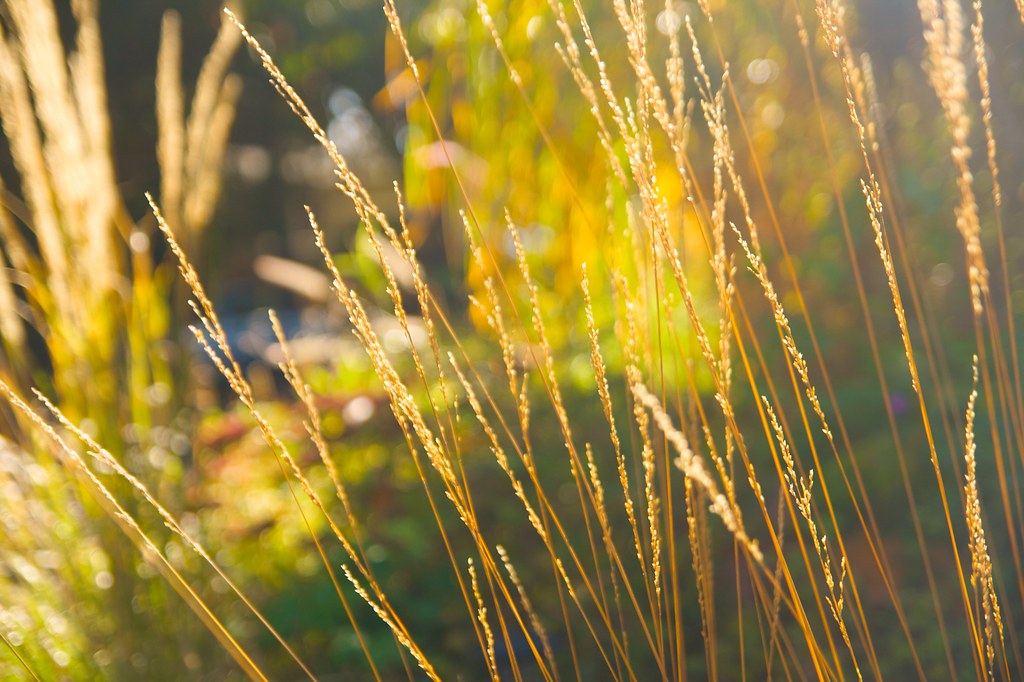 Molinia 'Moorhexe'
Molinia 'Moorhexe'
While I've always been intrigued by the taller varieties of Molinia ('Skyracer' and 'Transparent'), I'd never really given much thought to the smaller varieties until my recent trip to Wind Dancer Garden this fall. I was captivated at the nursery, however, by their amazing color and form. They are practically transparent...but provide a subtle scrim of color through which to see other plants...just love them!
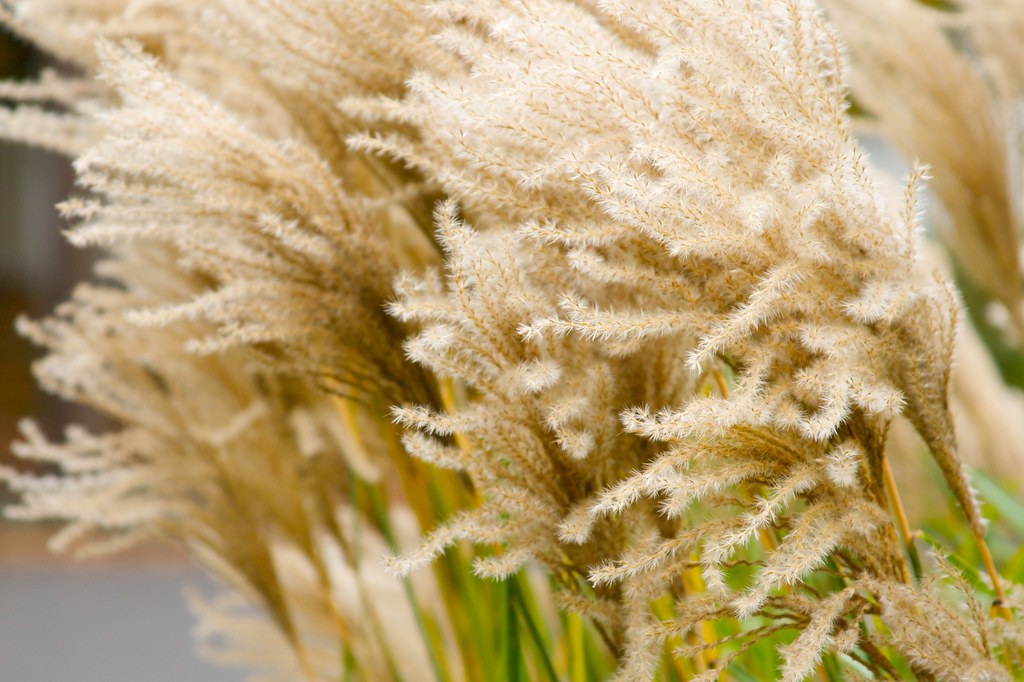 Miscanthus 'Malepartus' blooms when dry
Miscanthus 'Malepartus' blooms when dry
This is the very first plant (along with the neighboring Eutrochium 'Gateway') that I planted in my garden here on Rhone Street! I've always loved Miscanthus, but, let's face it, there are probably WAY TOO MANY on the market! I remember going to the nursery and being overwhelmed by the variety of Miscanthus cultivars...and really, without seeing them full-grown, how can you really make a good decision! Anyway, I lucked out by picking this variety that I'd never heard of. 'Malepartus' is a large Miscanthus...not for the faint of heart. The leaves are wider than many popular cultivars...looking to my Nebraska-raised eyes like a very open, fine-leaved clump of corn! Thats not to say it isn't lovely...because it is!
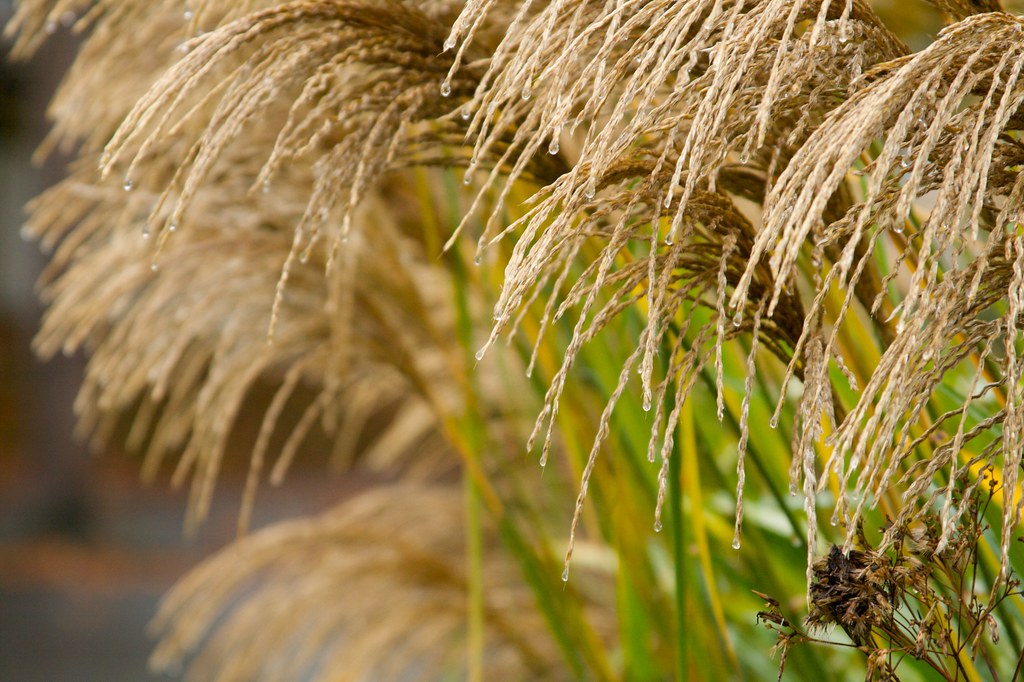 Miscanthus 'Malepartus' blooms after rain
Miscanthus 'Malepartus' blooms after rain
'Malepartus' emerges earlier than almost any other plant in my garden and quickly grows to form a beautiful fountain-shaped clump. The movement and texture of this grass are truly breathtaking. The blooms emerge a rich ruby-red...which always surprises me...they compliment the nearby Eutrochium perfectly...and case of lucky positioning, if ever there was one!. Sadly, it's a bit of a flopper for me...so I'm forced to corset the poor thing right around the time it blooms.
 Miscanthus 'Malepartus'
Miscanthus 'Malepartus'
'Malepartus' also has the added virtue of amazing autumn coloring. It's just now starting to really attain it's wonderful golden hue.
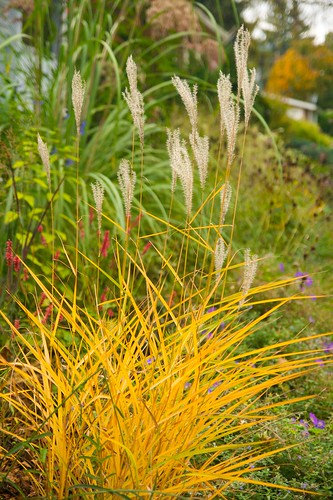 | | 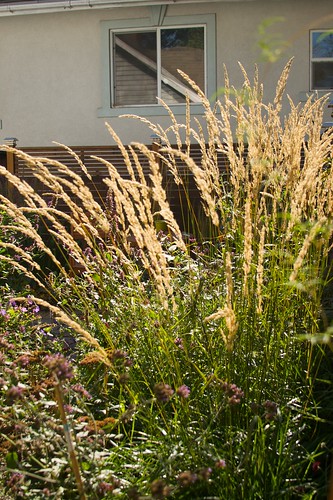 |
| miscanthus purpurascens | | Calamagrostis 'Karl Foerster' |
Miscanthus purpurascens is far smaller and more delicate than 'Malepartus', and is sort of nondescript for most of the year...which is not to say that it's not a handsome grass...but it's not terriby showy. The white, frothy plumes are quite nice...and really catch the light nicely. It's the fall color, however, that makes this grass truly garden-worthy. In my garden, they start to color right about the time the Rudbeckia goes to seed. The color is a wonderfully rich, warm gold (with hints of reddish-orange). It colors up quite a bit earlier than most other plants, so looks like a flaming torch in the garden! Calamagrostis 'Karl Foerster' is one of those grasses that I can't imagine gardening without...it's so very reliable...and manages to ALWAYS look good!
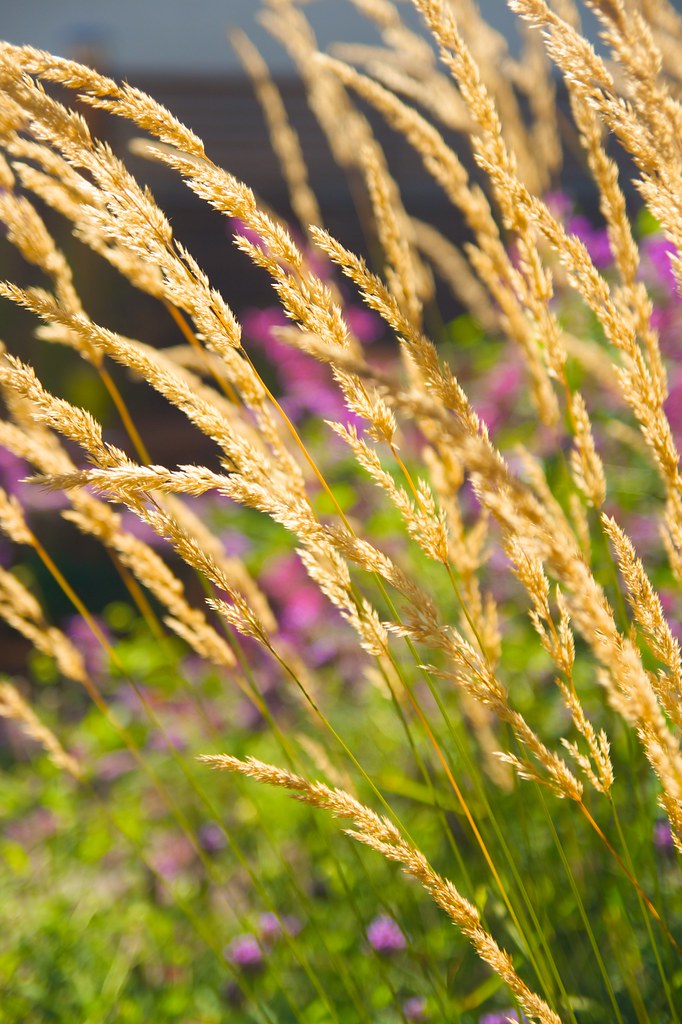 Calamagrostis 'Karl Foerster'
Calamagrostis 'Karl Foerster'
'Karl Foerster' is another grass that probably suffers a bit from overexposure...being used to widely in commercial landscapes. It does seem that when landscapers want "an ornamental grass", it's going to be good-ol' 'Karl' about 90% of the time. However, this is another case where common does not equal bad. 'Karl' deserves our admiration...in every respect. Being a cool-season grass, it's up and growing before most others...even before many perennials. This is a great benefit to the garden, since they don't leave a big hole in the garden while they get going. Also, they bloom as early as June, far earlier than most grasses. The tall, narrow spikes last all summer, fall and winter...looking great right until you cut them down in late winter/early spring (as new growth is starting).
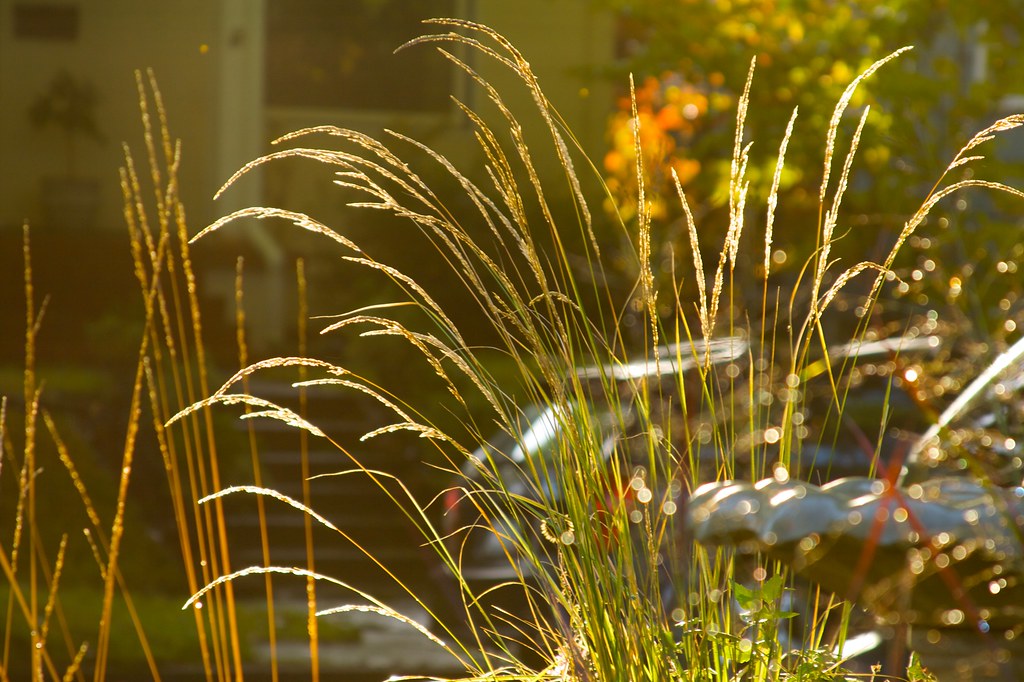 Calamagrostis 'Avalanche'
Calamagrostis 'Avalanche'
While I love how narrowly upright the blooms of Calamagrostis are...I also like how they arch outward when drenched with rain. Luckily, as soon as they dry out, they spring right back up again!
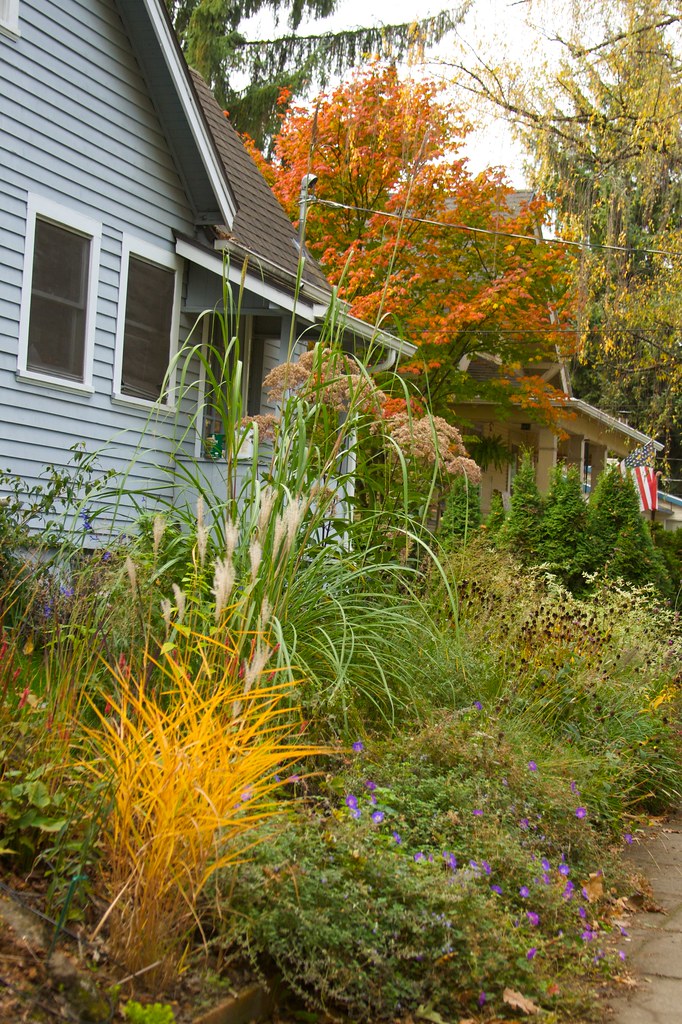 Saccharum ravennae
Saccharum ravennae
Something of an anomaly in my garden is this semi-tropical-looking giant grass...also known as hardy sugar cane and hardy Pampas Grass. You can hardly beat this grass as a specimen plant...it's just huge. For most of the summer, it's a large fountain of long leaves. This is actually my favorite aspect of the grass...it's very graceful and demure for its size. The individual blades are really long (like 5-6') but all arch gracefully out from the center of the clump. Not heavy-looking, the blades dance in the slightest breeze...looking like ribbons caught in the wind...absolutely love it!
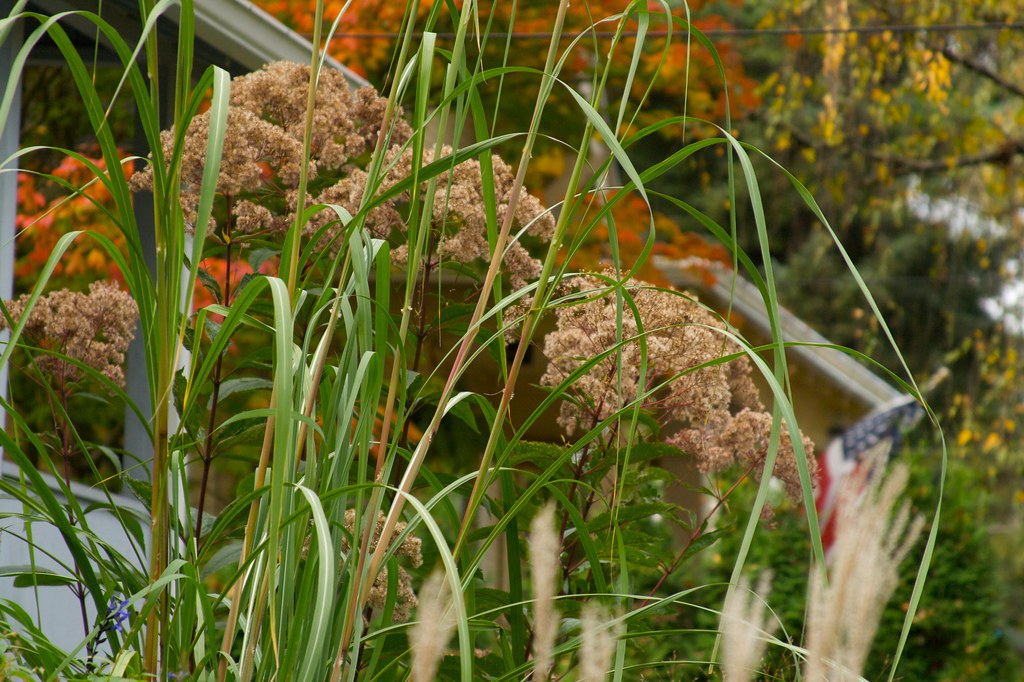 Saccharum ravennae
Saccharum ravennae
As fall approaches, Saccharum stretches up it's blooming stalks...which seem to top 10' in my garden...so tall that they are hard to capture well in photos. The stalks are kinda fabulous by themselves. They are covered in fine hairs and are blushed with red...really striking. In my garden, the blooms so far haven't quite opened completely. In warmer climates (and with more liht, probably) they would be large, open panicles of pinkish-silver. Still...I'd grow it just for it's form alone...it's that good!
 Muhlenbergia capillaris
Muhlenbergia capillaris
Now for something very different...Pink Muhly Grass. I first discovered this grass from
Nan Ondra's book,
Fallscaping...which, if you've never read, you MUST! While this grass is pretty nondescript for most of the year, staring in late summer/early fall it sends up dozens and dozens of stems topped with pink blooms. By the time it's in full blooms, the entire plants seems to be engulfed in a haze of pink...it's truly breathtaking...and so unexpected, both from a grass, and at this time of year.
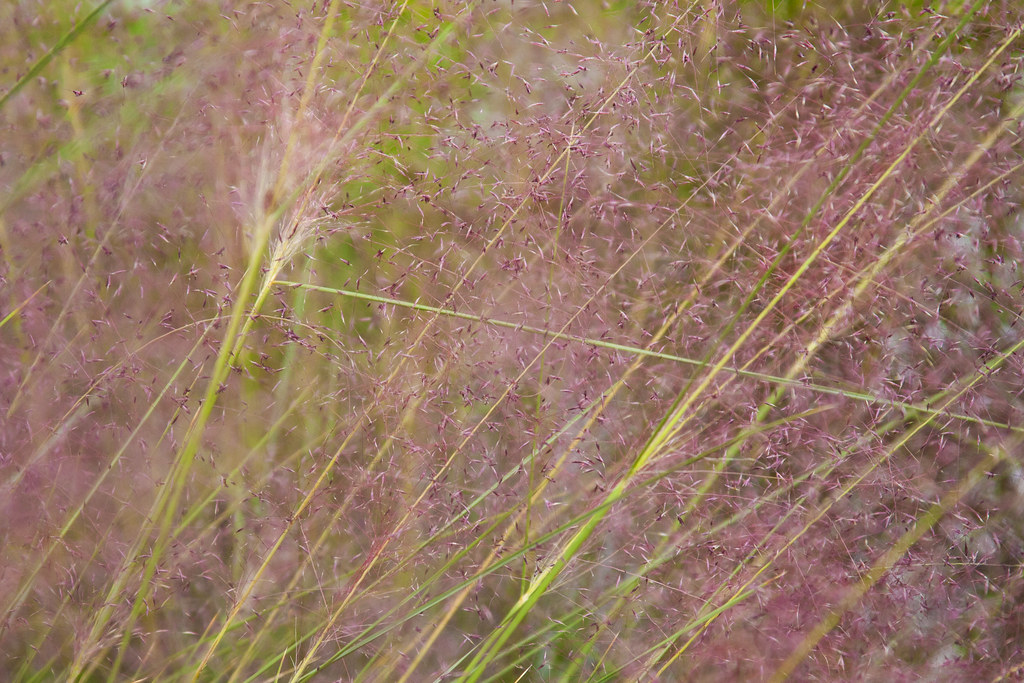 Muhlenbergia capillaris
Muhlenbergia capillaris
Here you can see a close-up of the flowers...each bloom is tiny...but there are so many produced that you get a wonderful, cloud of rich color!
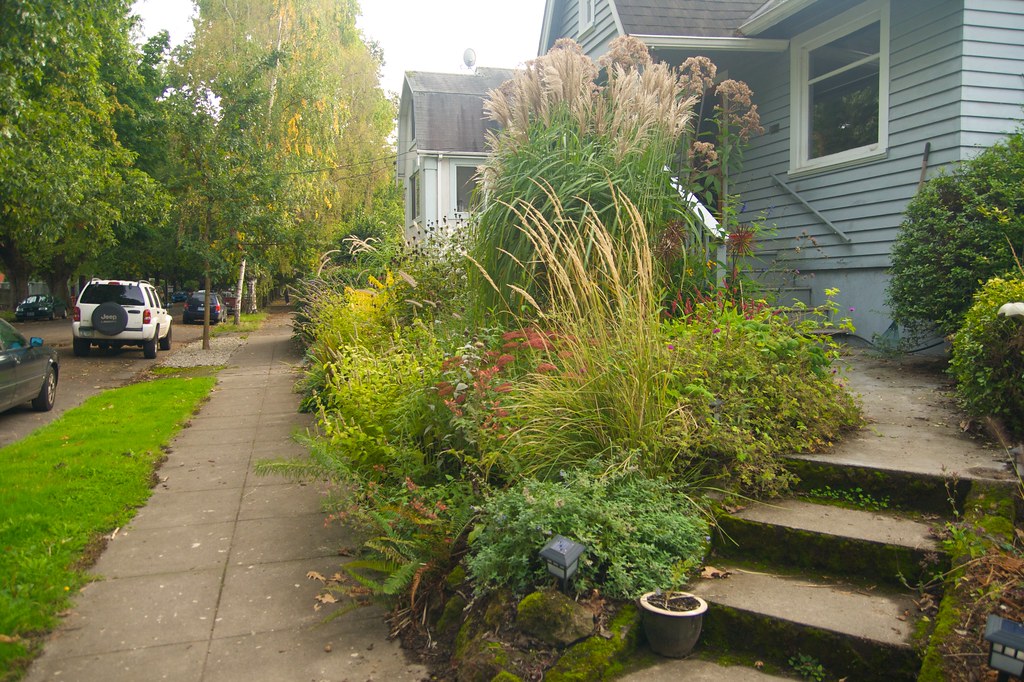 As I wrap it up, here's the front (East) border...
As I wrap it up, here's the front (East) border...
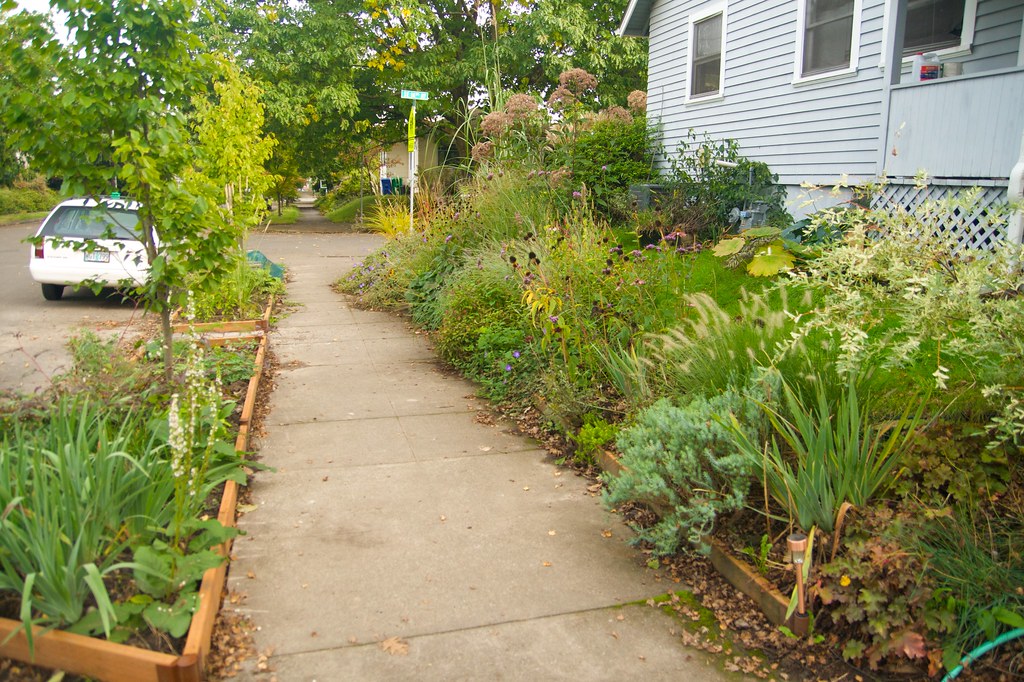 ...and the side (North) border.
...and the side (North) border.
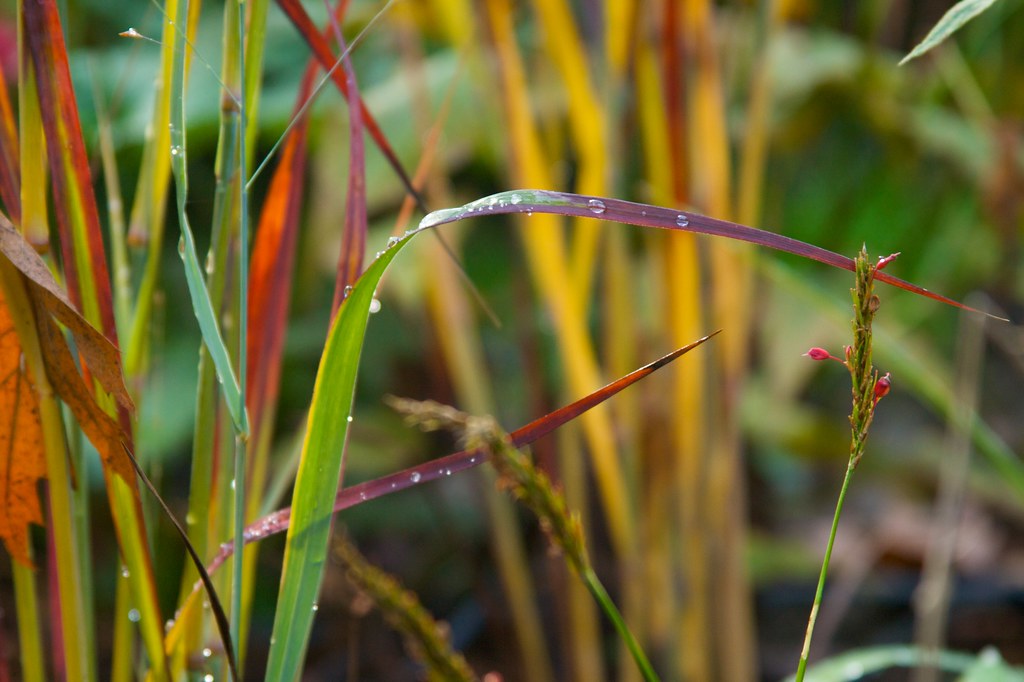 Panicum 'Blood Brothers'
Panicum 'Blood Brothers'
And I close with another shot of 'Blood Brothers', just can't get enough! And now I'm off to visit the blogs that I've been unable to for the past few weeks...woo-hoo!
